How to use Dell EMC Networker with Wasabi using Data Domain?
Dell EMC's Networker has been validated for use with Wasabi's cloud storage. As part of Dell's Data Protection Suite, NetWorker offers comprehensive data protection software applications and tools for enterprises.
Networker can be used to tier backups to Wasabi using Data Domain (DD) Cloud Tier. This article provides the steps needed to configure Networker with Data Domain to tier backups to Wasabi.
Prerequisites
An active Wasabi account.
Networker software deployed and licensed.
Data Domain with cloud tier is required. Data Domain with Cloud tier is deployed and licensed.
DD Cloud tier is set up on Data Domain and a Wasabi bucket is added as a Cloud Unit. To configure Cloud Tier on Data Domain, refer to Dell PowerProtect DD Cloud Tier With Wasabi.
To use Data Domain with NetWorker, the NetWorker server hostname should be lowercase. Data Domain functions with lowercase and DD Cloud tier operations fail if the hostname is mixed case.
Data Domain and Networker FQDNs are resolved through DNS.
Architecture Diagram
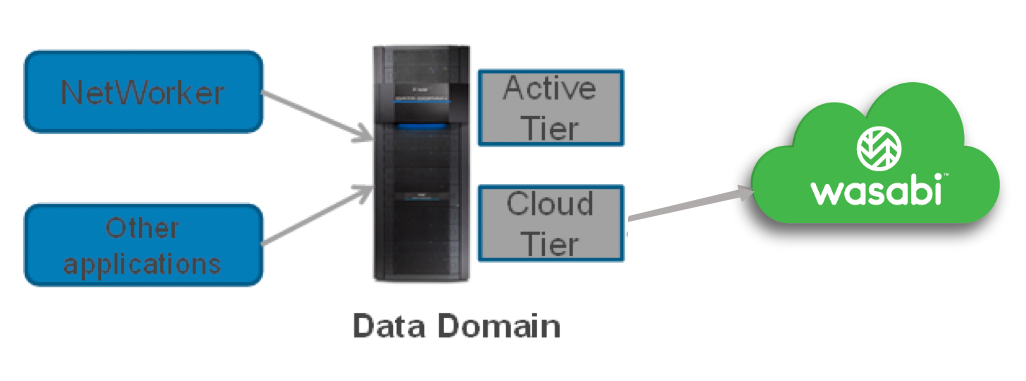
Adding the Data Domain Device
This section provides instructions for adding a Data Domain device to Networker. Once you add a Data Domain device, you can use Networker to save backup sets on the Active Tier on the Data Domain system. The saved backup sets can then be tiered to Wasabi Cloud storage using Data Movement policies configured on the Data Domain system to move data from the Active tier to the Cloud tier. Refer to Dell PowerProtect DD Cloud Tier With Wasabi to configure Data movement policies on the DD system.
Log into the Networker UI and select the Devices tab.
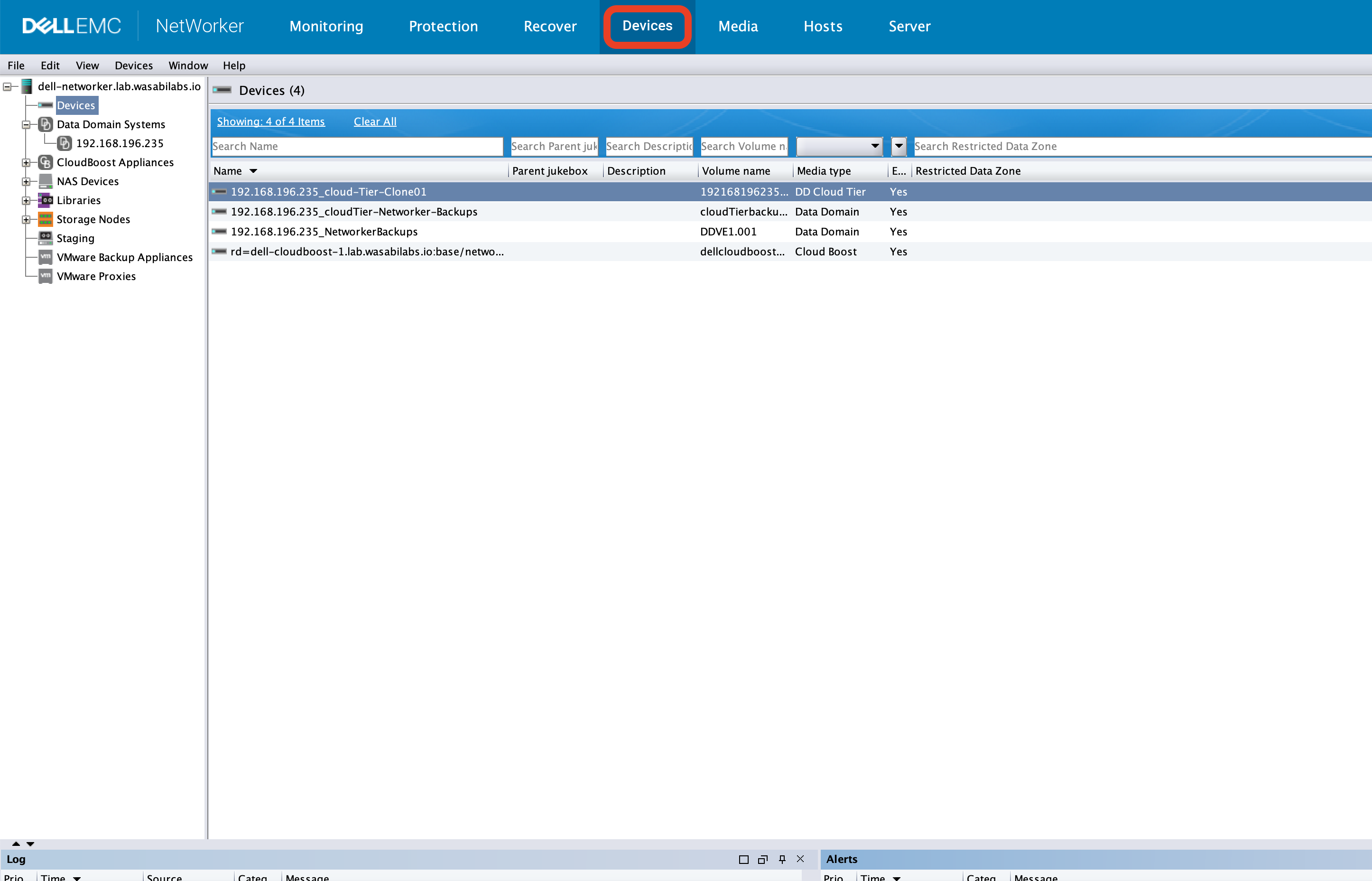
Right-click on Devices and click New Device Wizard.
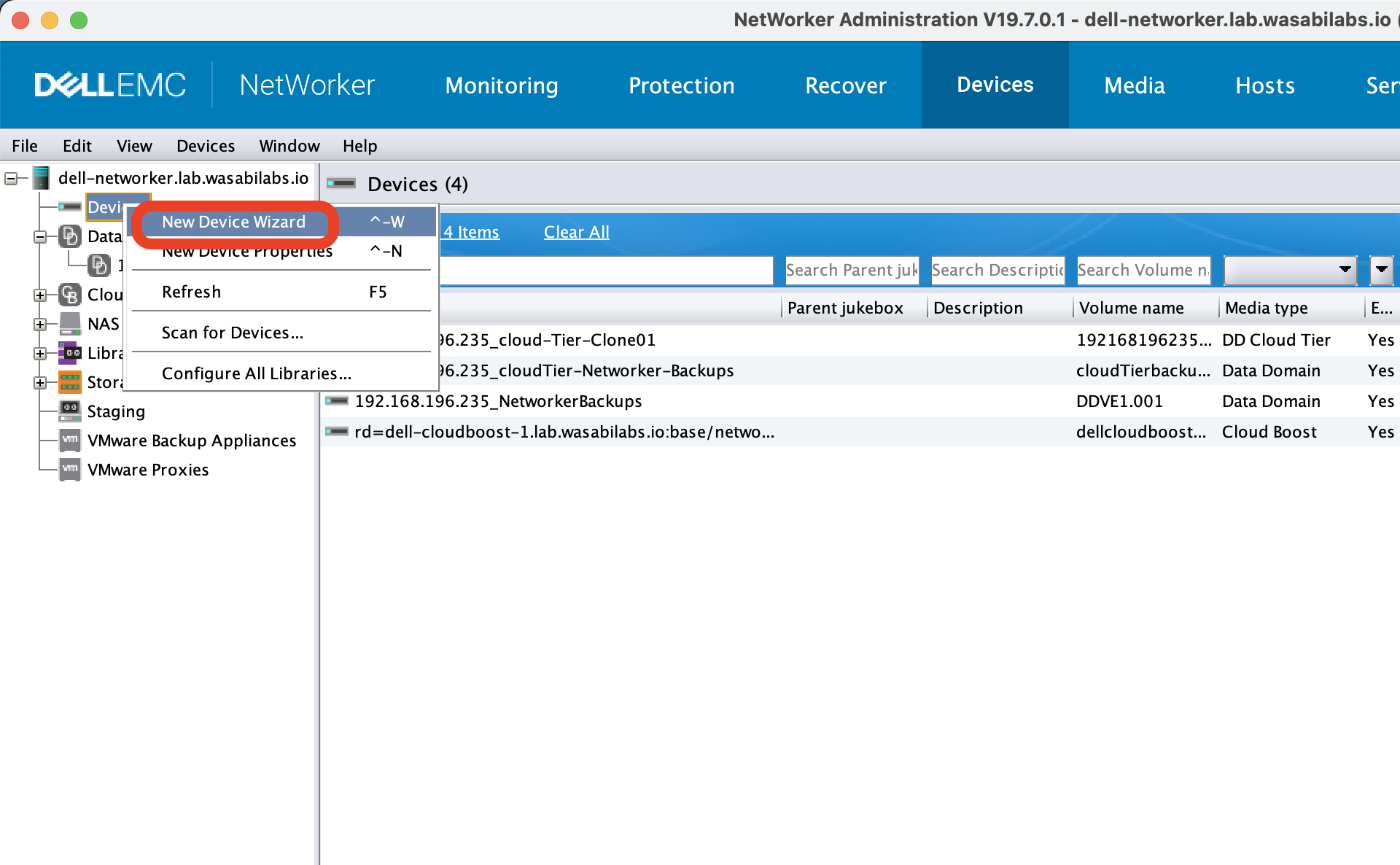
In the New Device Wizard, select DD Cloud Tier and click Next.
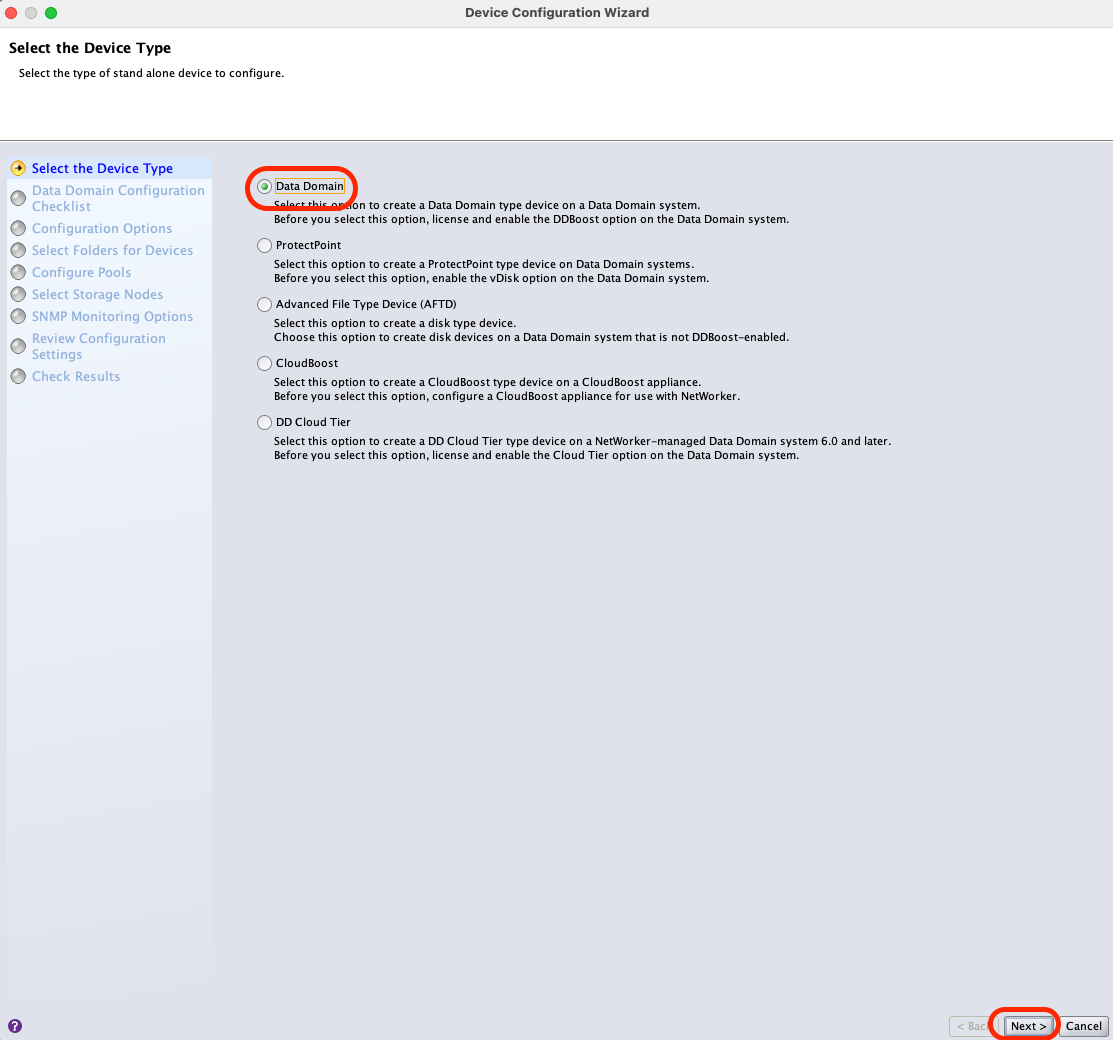
Review the checklist and click Next.
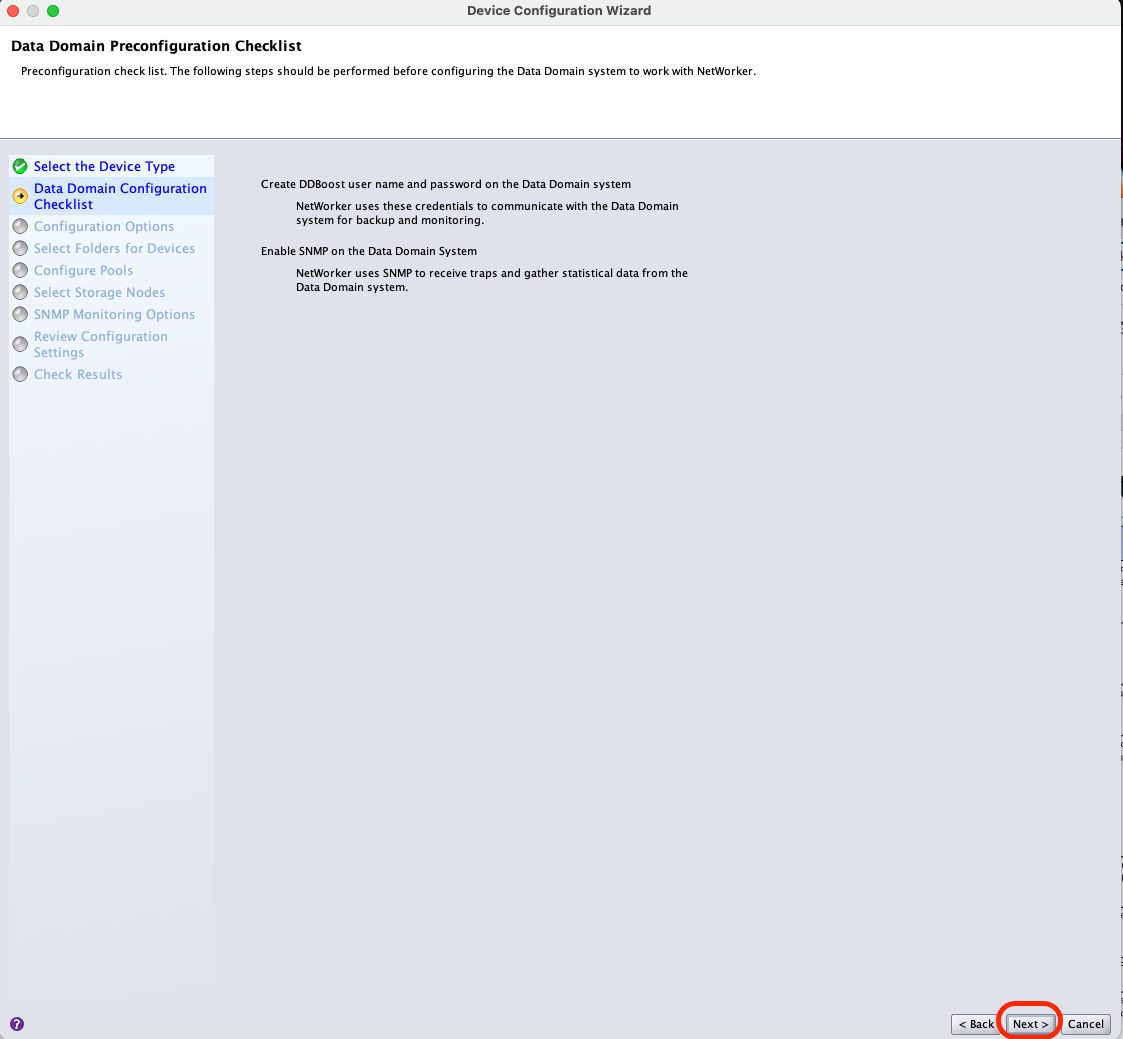
On the Device Configuration Wizard, select Add a new Data Domain System and enter the DD Boost and DD Management Credentials (optional). Click Next.
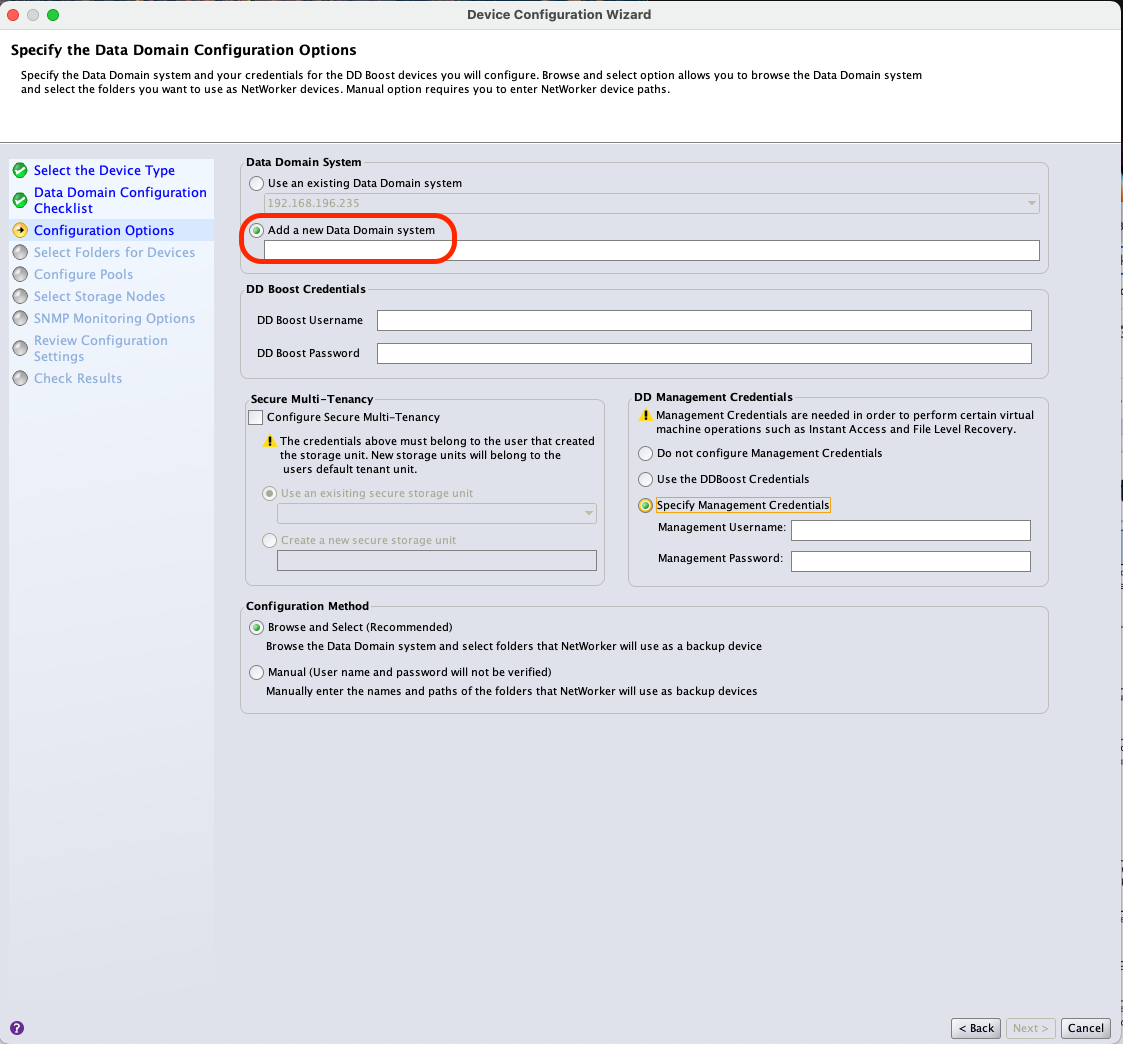
On the Select Folders page, create a Data Domain Device, select the Data Domain system and click New Folder to create a folder. Enter a name for the new folder, then select the checkbox next to the folder or device name. Click Next.
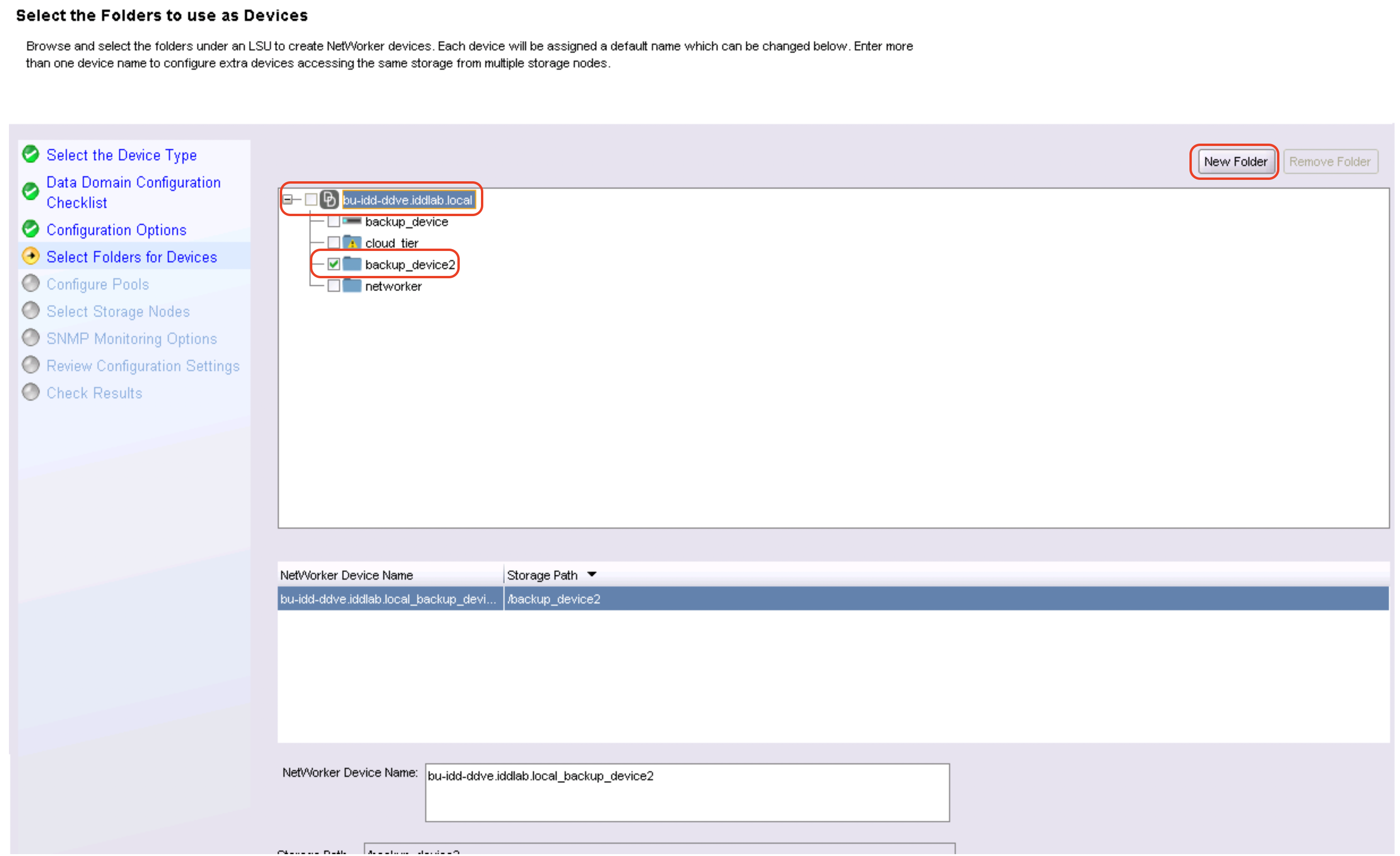
On the Select Storage Nodes page, select Use an existing storage node and select the existing networker node. Click Next.
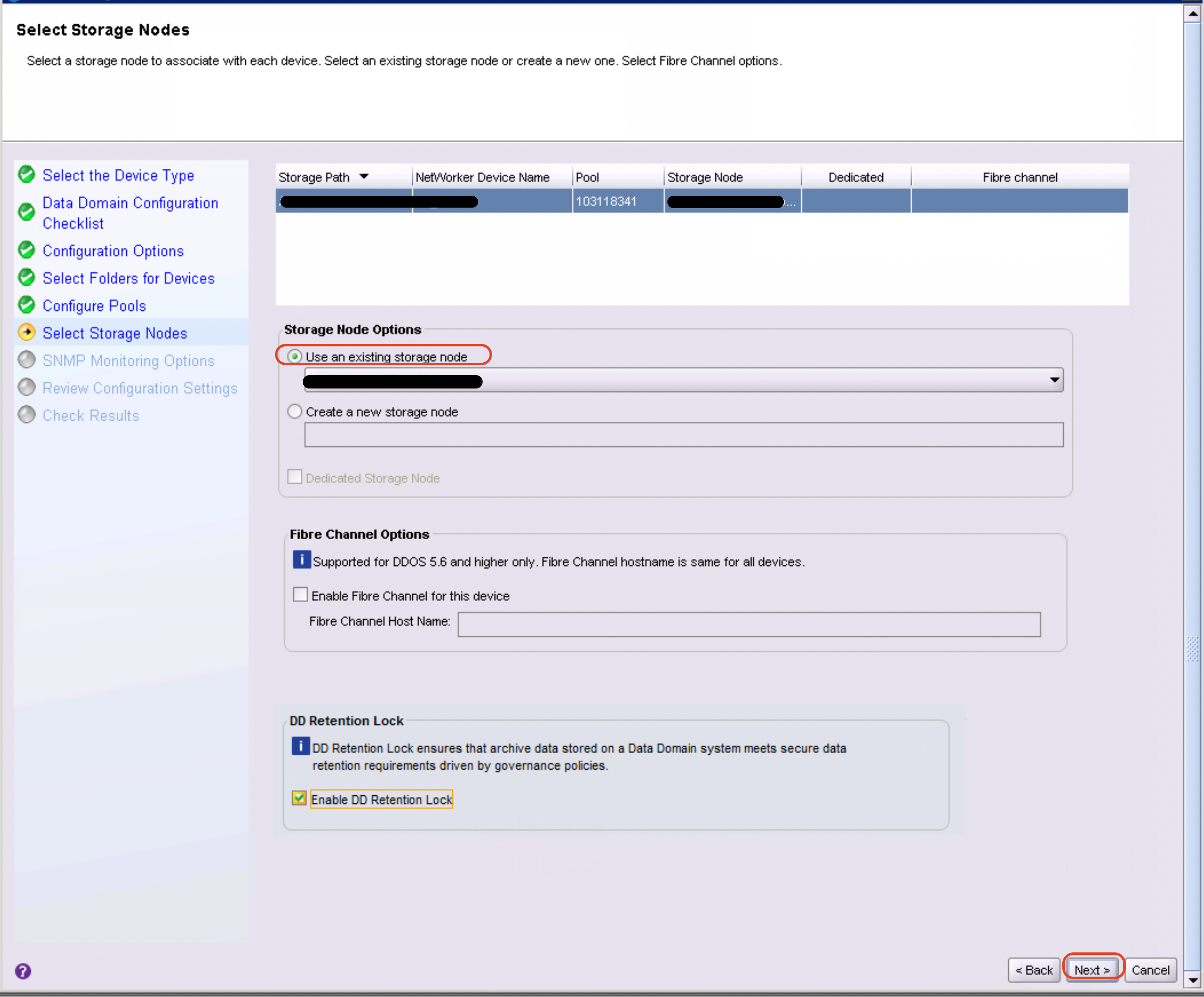
On the Select SNMP Monitoring Options page, enter the SNMP Community String for the Data Domain system. Check Receive SNMP trap events and specify the port, if it is different than 162. Click Next.
The SNMP community string should be set to the value configured on the Data Domain system under Administration>> Settings>> SNMP>> Communities.

On the Review the Device Configuration Settings page, review the configuration information. Click Configure to add the Data Domain device.

Select the Devices tab, then click Data Domain Systems in the left panel. You should see the Data Domain device listed. To modify the device properties, right-click on the DD device and click on Properties.
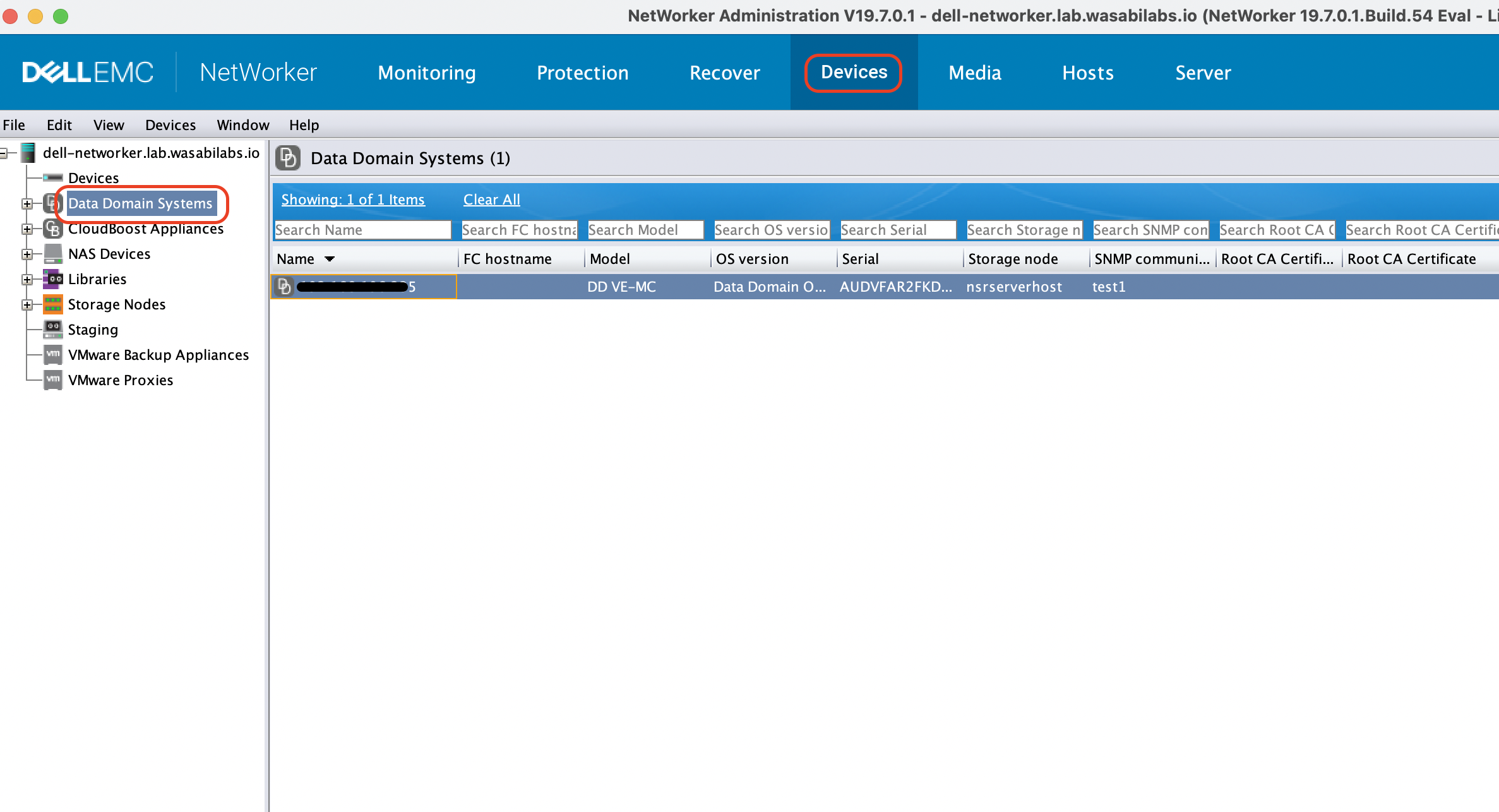
Adding DD Cloud tier to Networker
Follow the steps to add a DD Cloud tier device on Networker. Once the device is added, it can be used to clone backup sets directly to the Cloud tier on the Data Domain system.
Log into the Networker UI and click Devices.

Right-click on Devices. Click on New Device Wizard.

In the New Device Wizard, select DD Cloud Tier. Click Next.
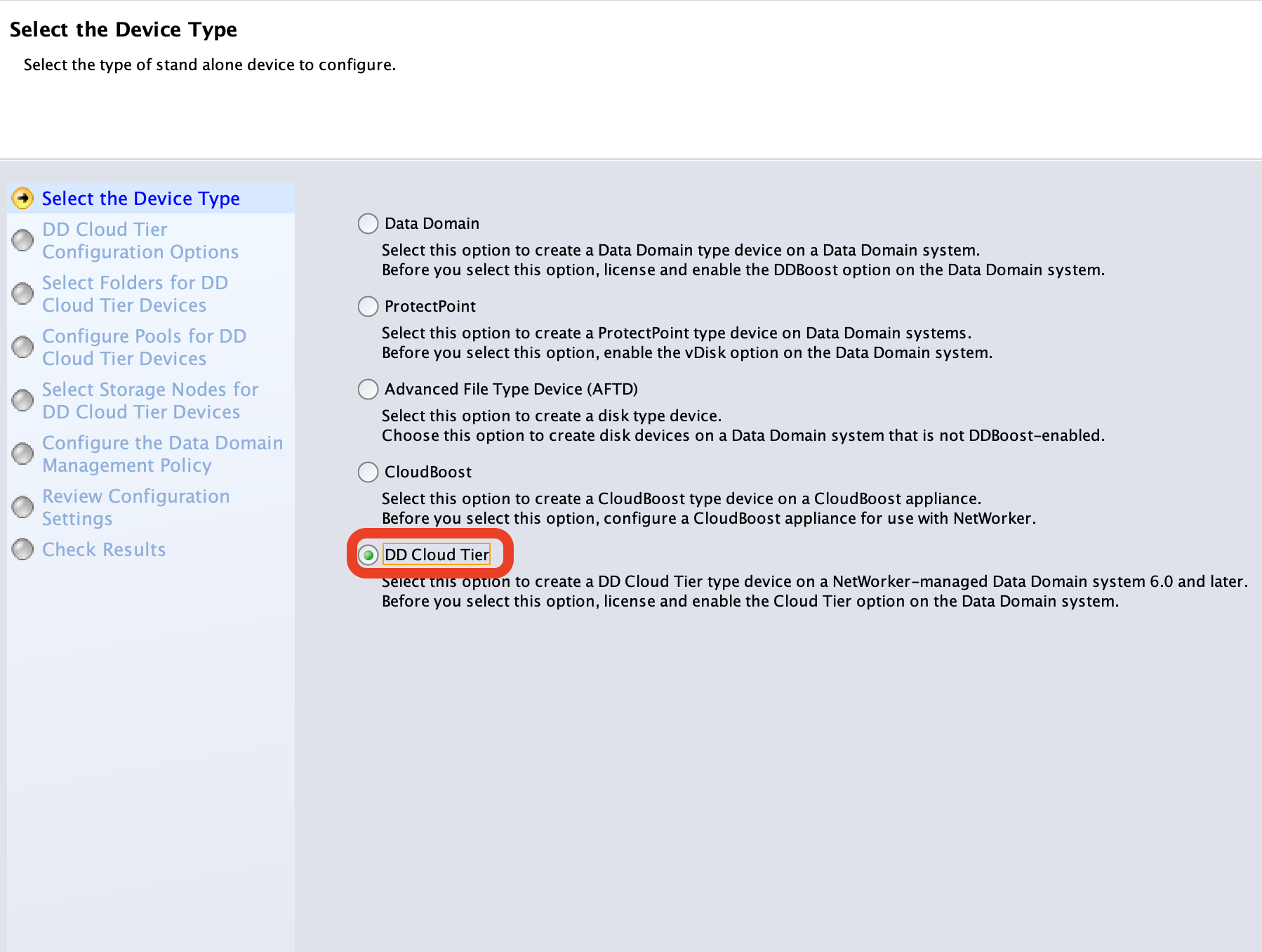
Select Data Domain System and input the DD Boost username and password in the DD Cloud Tier Configuration Options window. Select the remaining details as applicable to your environment.

On the Select Folders page, create a DD Cloud Tier Device, select the Data Domain system, and click New Folder to create a folder for the DD Cloud Tier device.
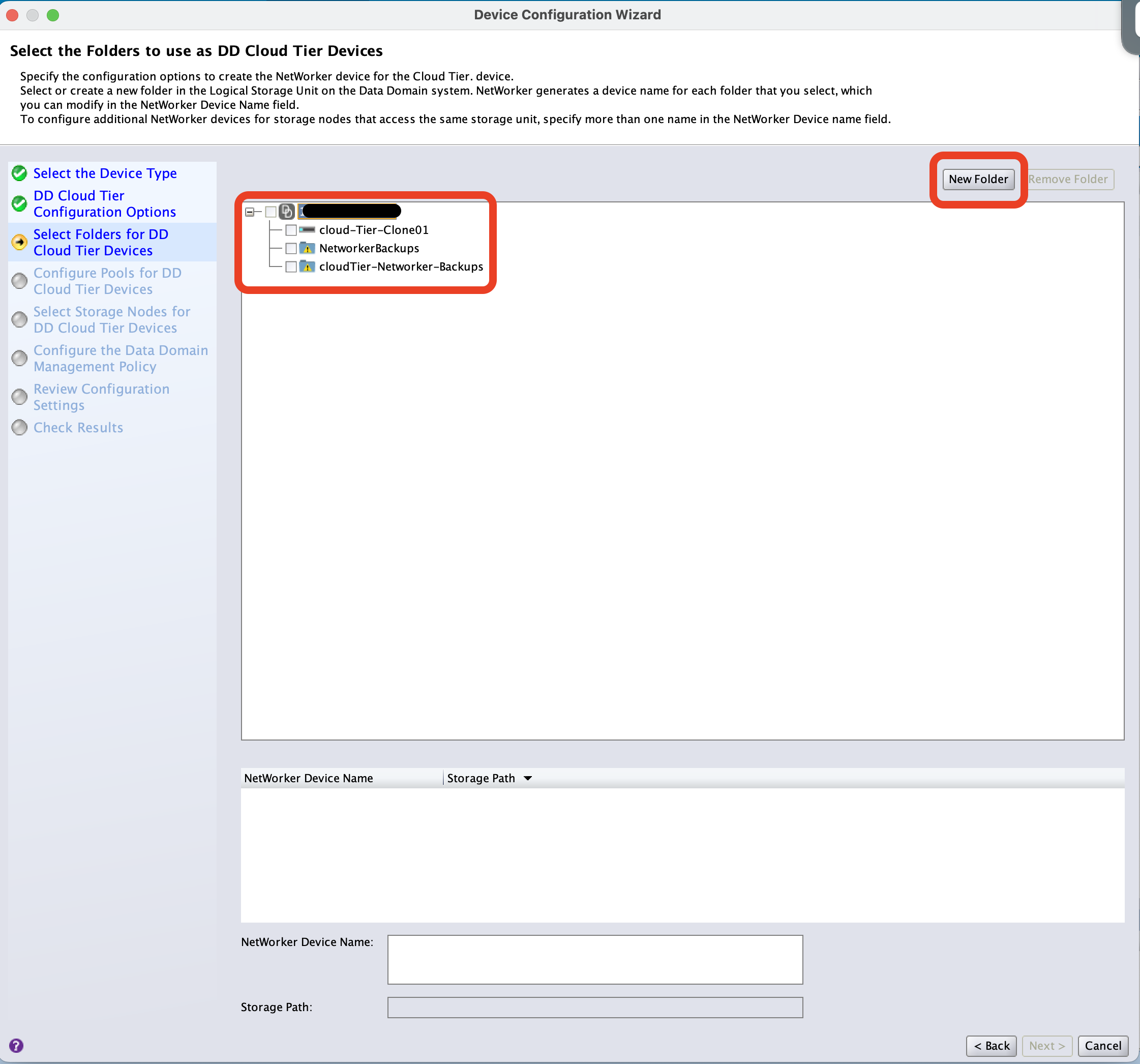
On the Configure a Pool for the DD Cloud Tier Device page, select the Configure Media Pools for Devices". In the Pool section, either create a new pool or select an existing pool for DD Cloud Tier. Select Label and Mount device after creation. Click Next.
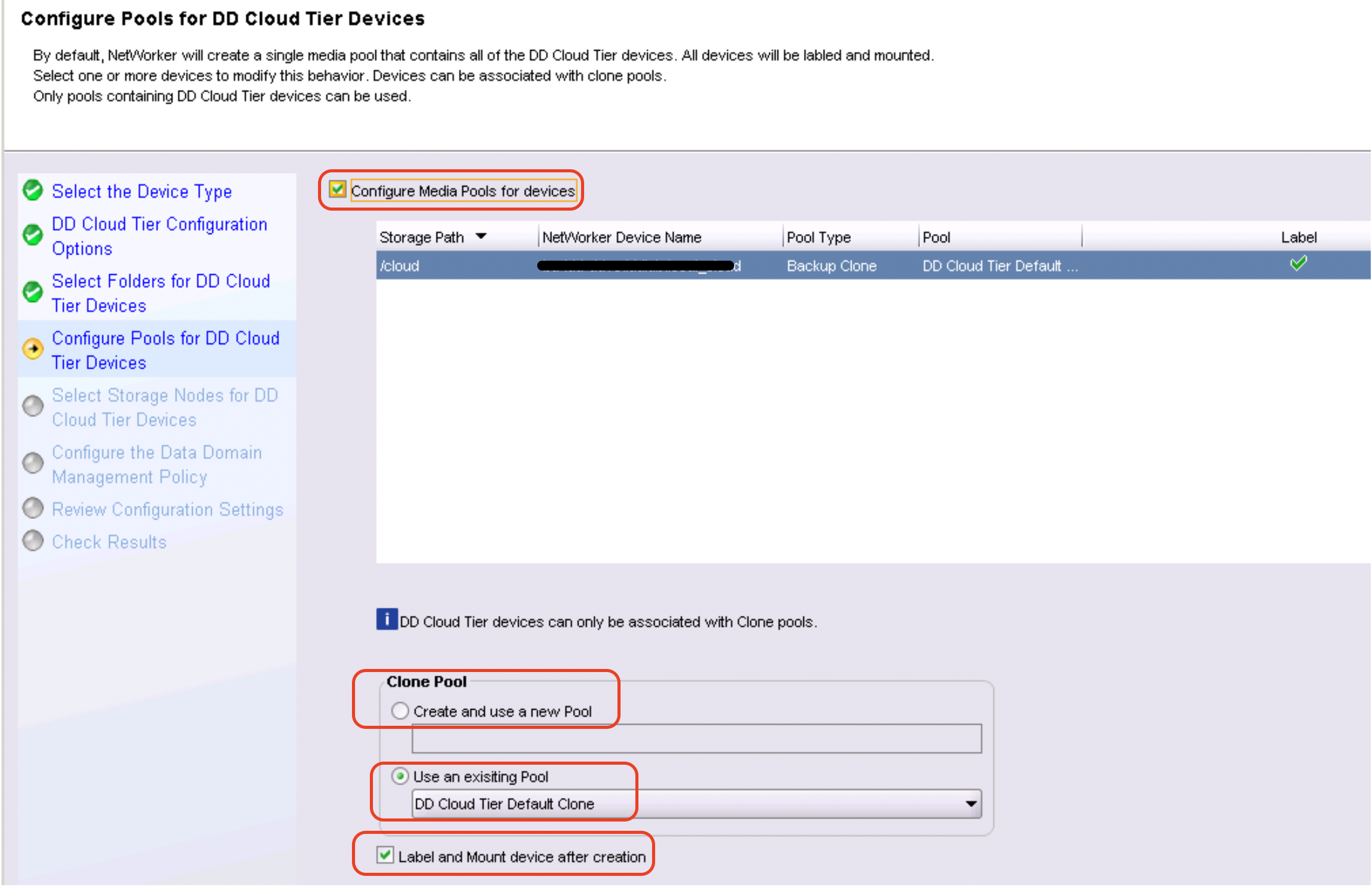
On the Select the Storage Nodes for the DD Cloud Tier Device page, select an existing storage node or create a new one by entering the hostname for the storage node. Click Next.

On the Configure the Data Domain Management Policy page, enter the following details:
In the Data Domain Host field, specify the hostname of the Data Domain system.
In the Admin User field, enter an admin username for the Data Domain system.
In the "Admin Password" field, enter the password for the above admin user.
In the CA Certificate field, click Pull Certificate. The Device wizard contacts the Data Domain system and displays the certificate in the Certificate field. The Management Certificates window appears.
From the Select Certificate list, select the certificate.
In the Certificate Details field, review the certificate. If the certificate is correct, click I Trust. The CA Certificate field on the Configure the Data Domain Management Policy window displays the certificate.
In the Cloud Unit Name field, specify the name of the cloud unit that you created on the Data Domain system.
Click Next. In the Updating Data Movement Policy dialog box, click OK.
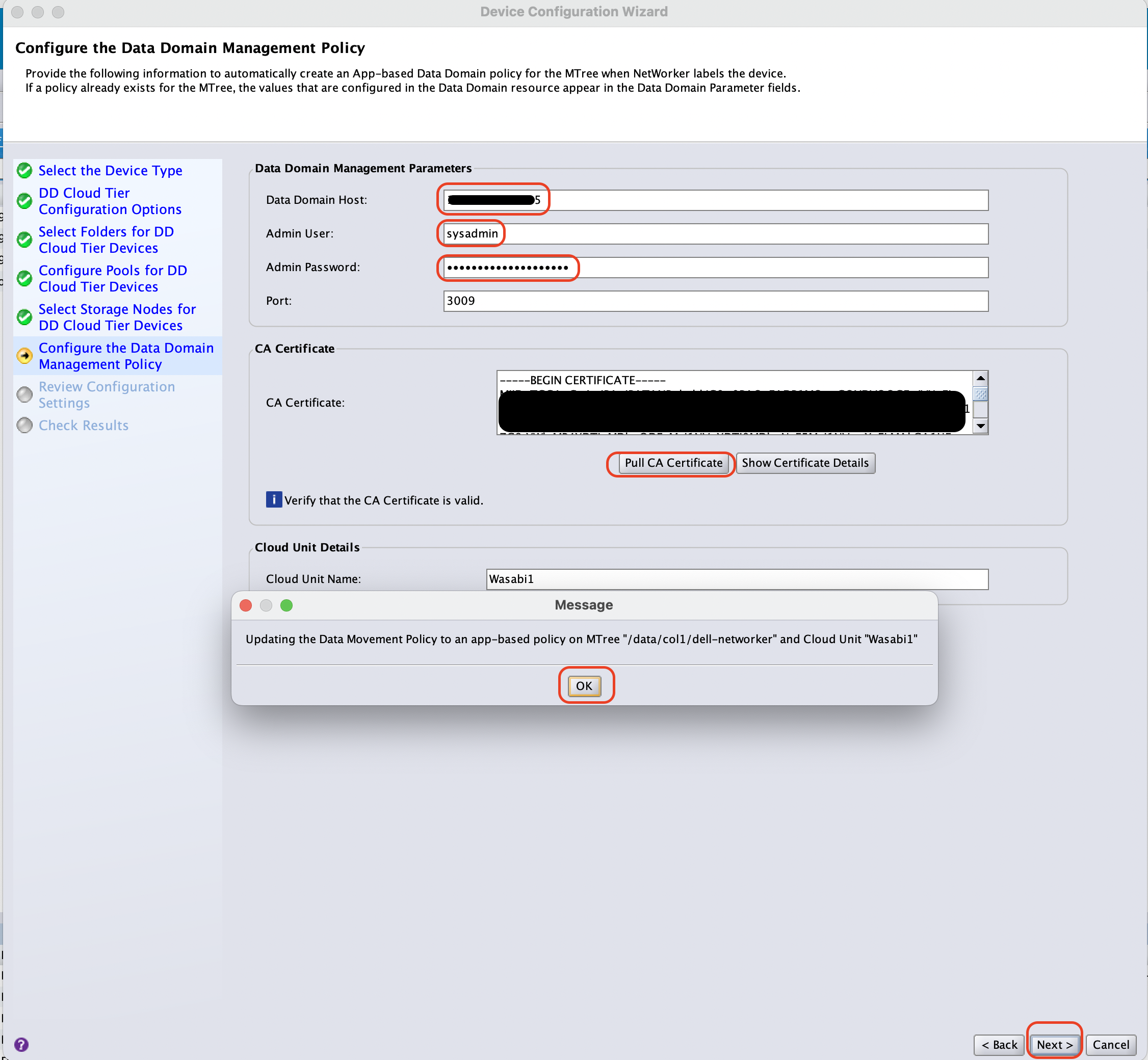
Review the device configuration. Click Configure to create the device.
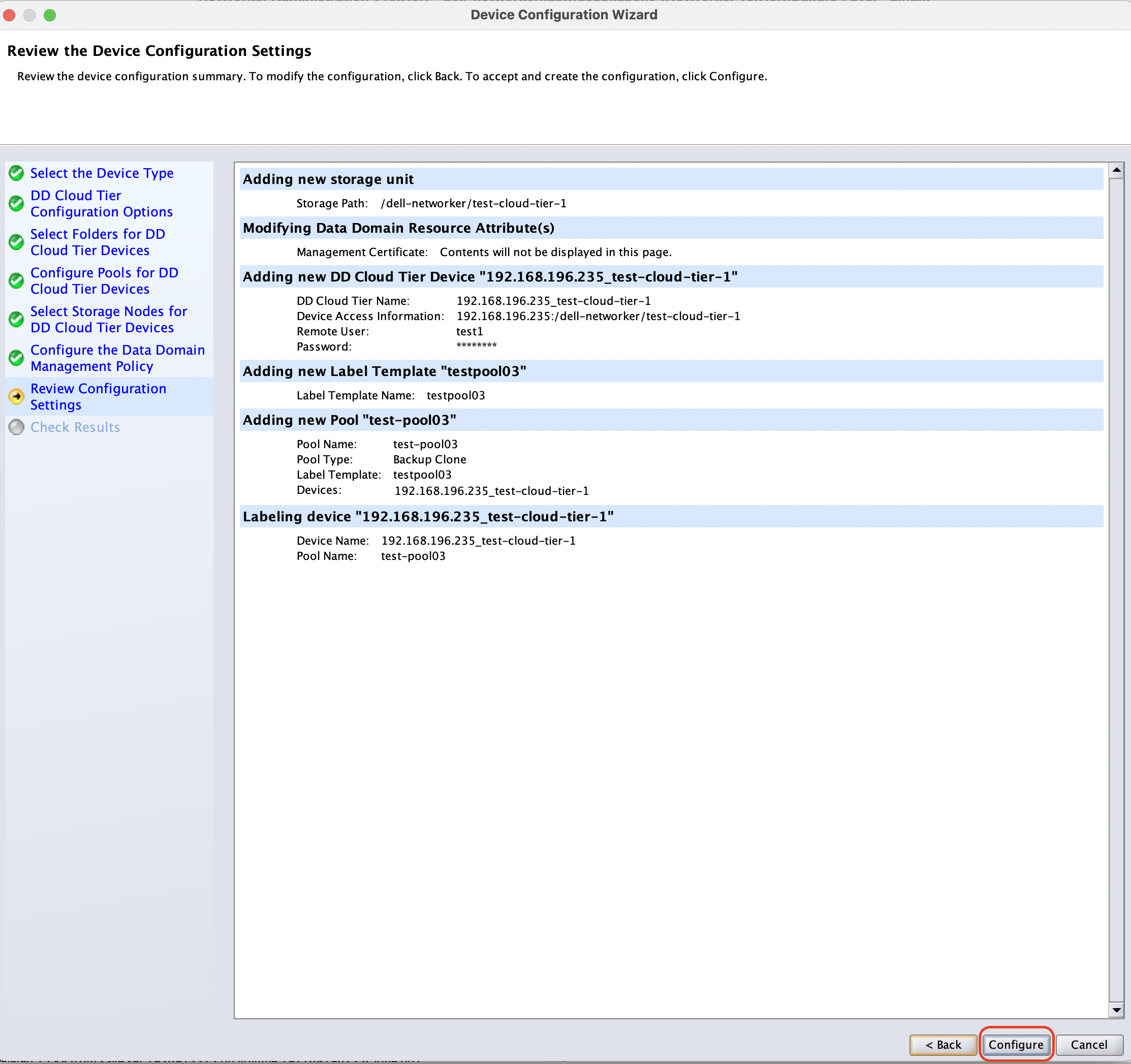
Select the Devices tab. Click Data Domain Systems on the left panel to view the newly created DD Cloud Tier device. To modify the device properties, right-click on the DD device and click Properties.
Creating Backups on Networker
The following steps describe how to create a policy and workflow to create backups to be stored on the Data Domain system configured on Networker in section 3 above.
Log into the Networker Administration GUI and click Protection.
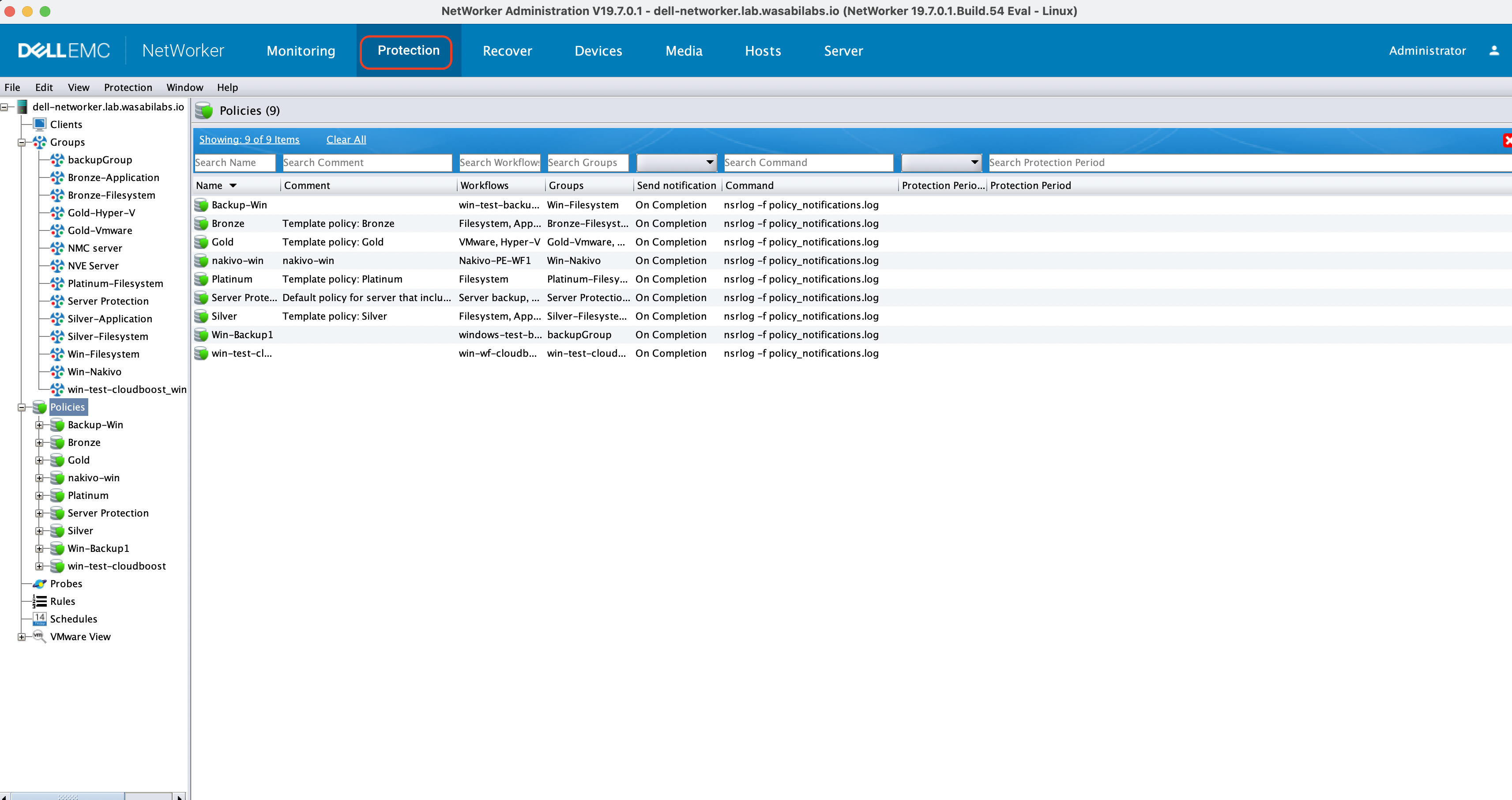
Right-click on Policies. Click New.

In the Create Policy window, enter the name and click OK to create a new policy.

Click Create a new Workflow.
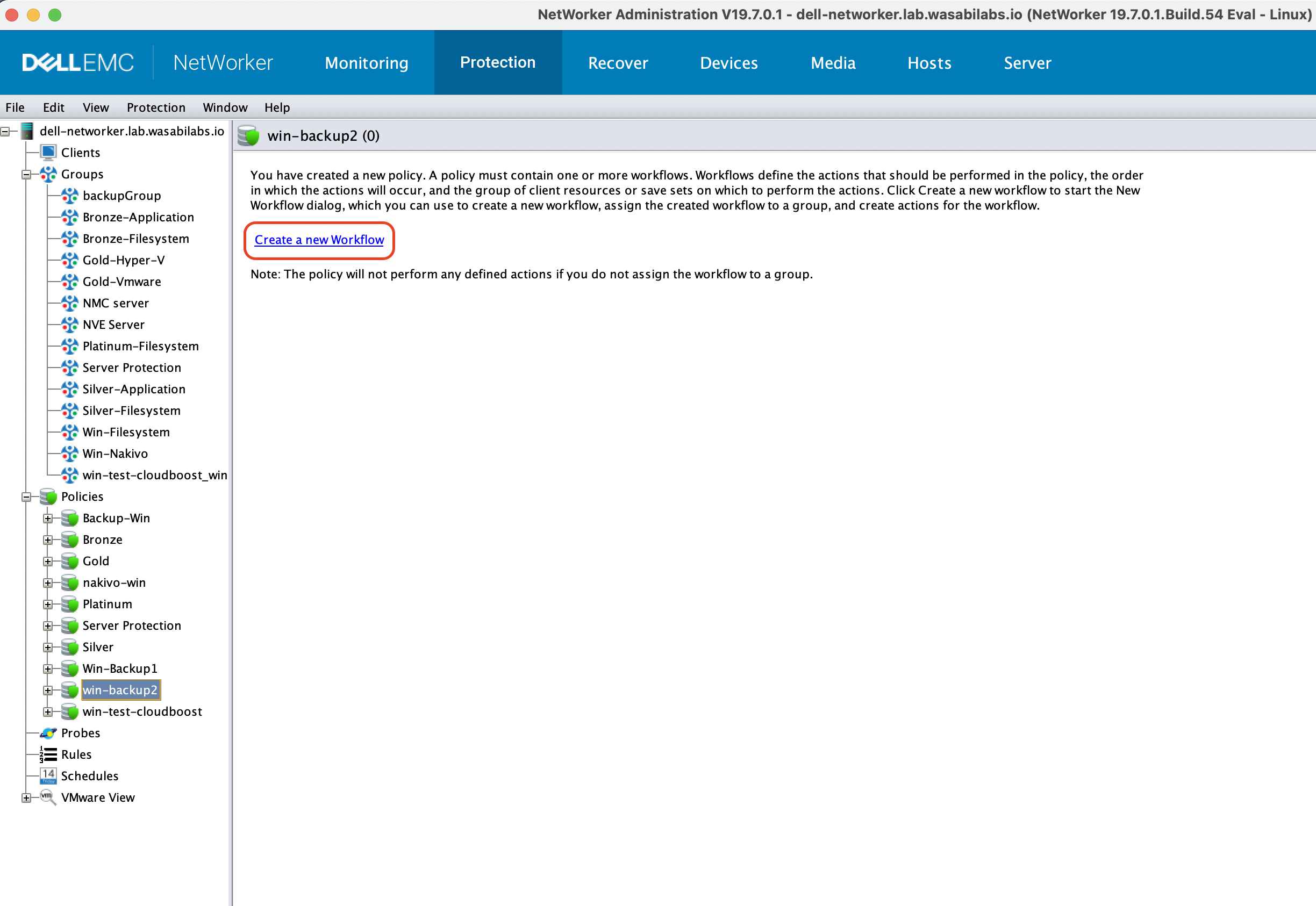
In the New Workflow window, enter a name for the workflow. Click + to add the group that on which to run the workflow.
Click Add to create and add a new Action.

The Policy Action Wizard opens. Enter the name for the Action and select Action Type as the Backup. Optionally, select the Period and days of the week to schedule backups. Click Next to specify Backup Options.
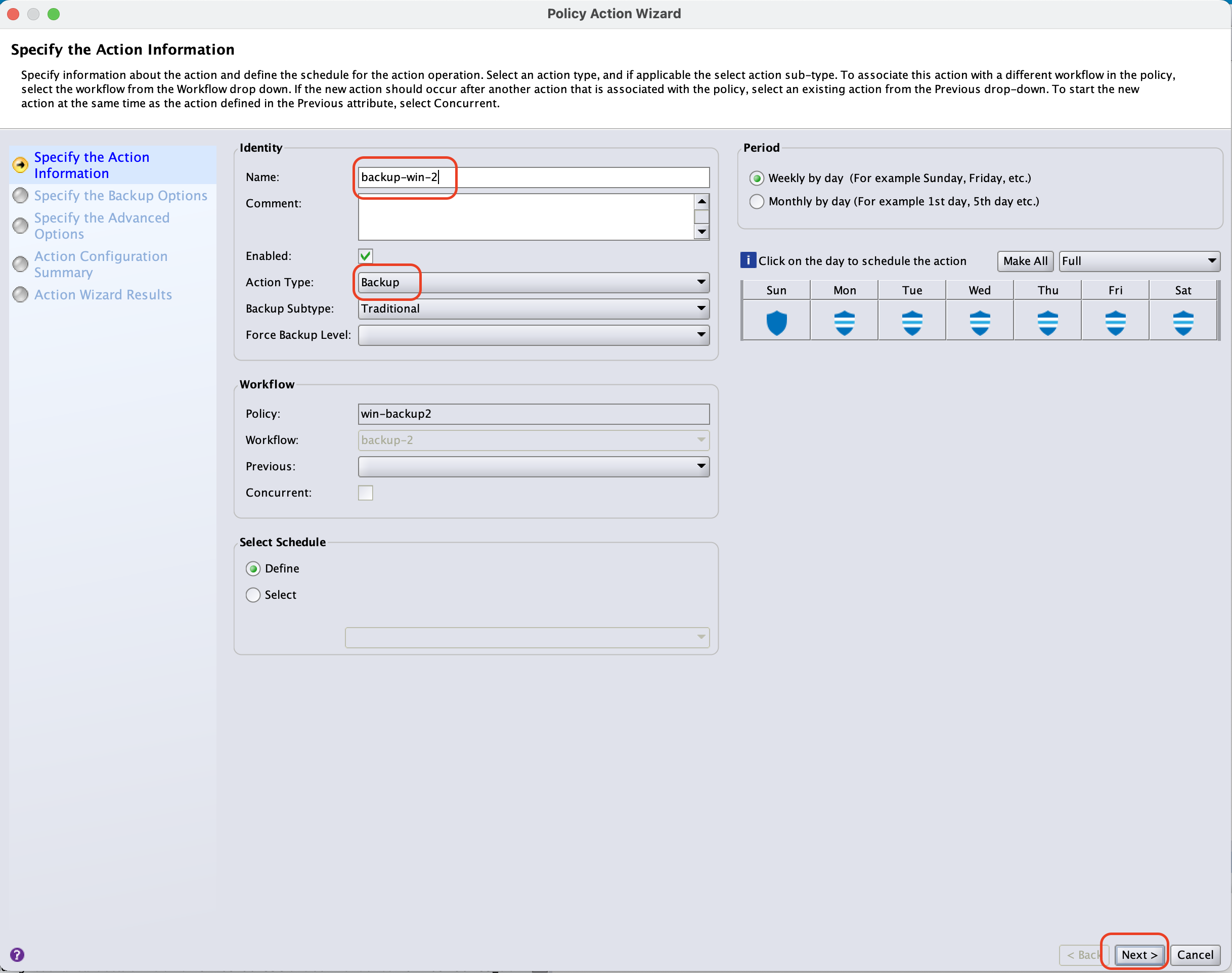
In the Specify Backup Options window, select the Destination Storage Node. Select the Data Domain system as the Destination Pool.

Optionally, in the Advanced Options window, set the advanced options and click Next.

Review the configuration for the new Action. Click Configure.
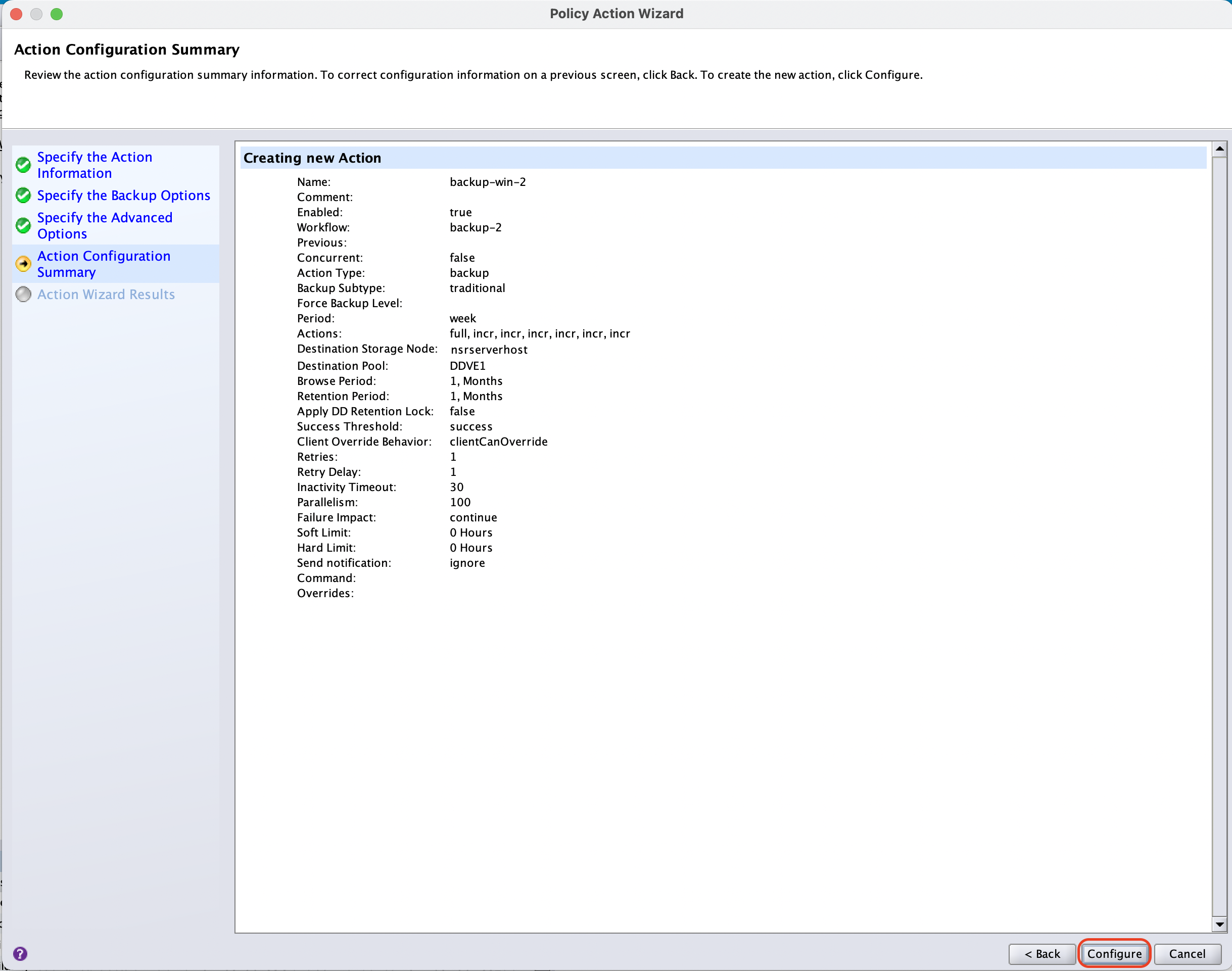
Click Ok to complete creating the new Workflow.
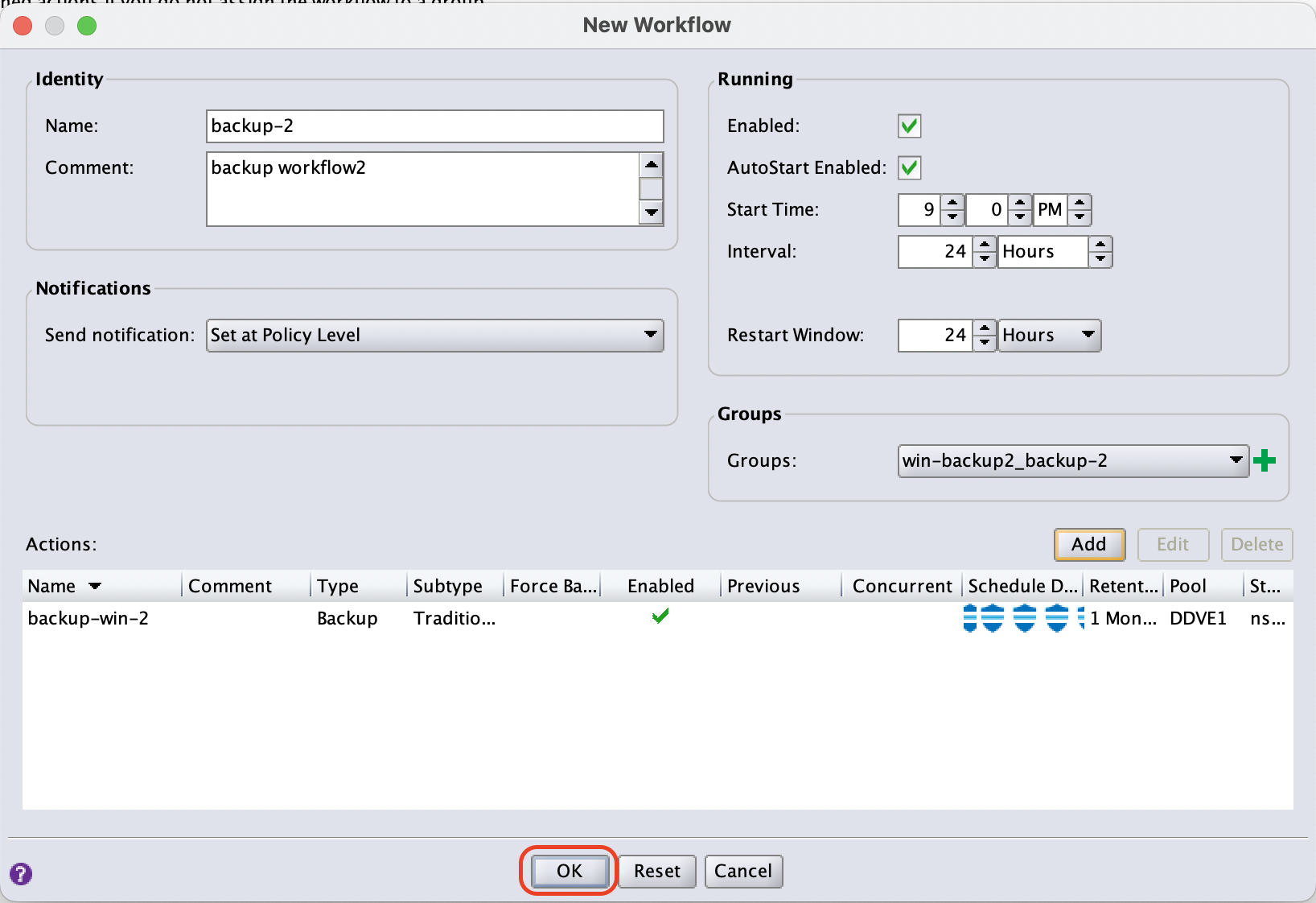
Networker Configuration to Clone to DD Cloud Tier
Cloning enables secure storage of the backups created by Networker to Wasabi Cloud for longer-term retention. The following steps describe how to create a workflow and policy action to create a clone to be stored on the Data Domain Cloud Tier configured on Networker in section 4 above.
On the Networker Admin GUI, click Protection and select the policy used for backing up the VM. Right-click on the Workflow and click Properties.
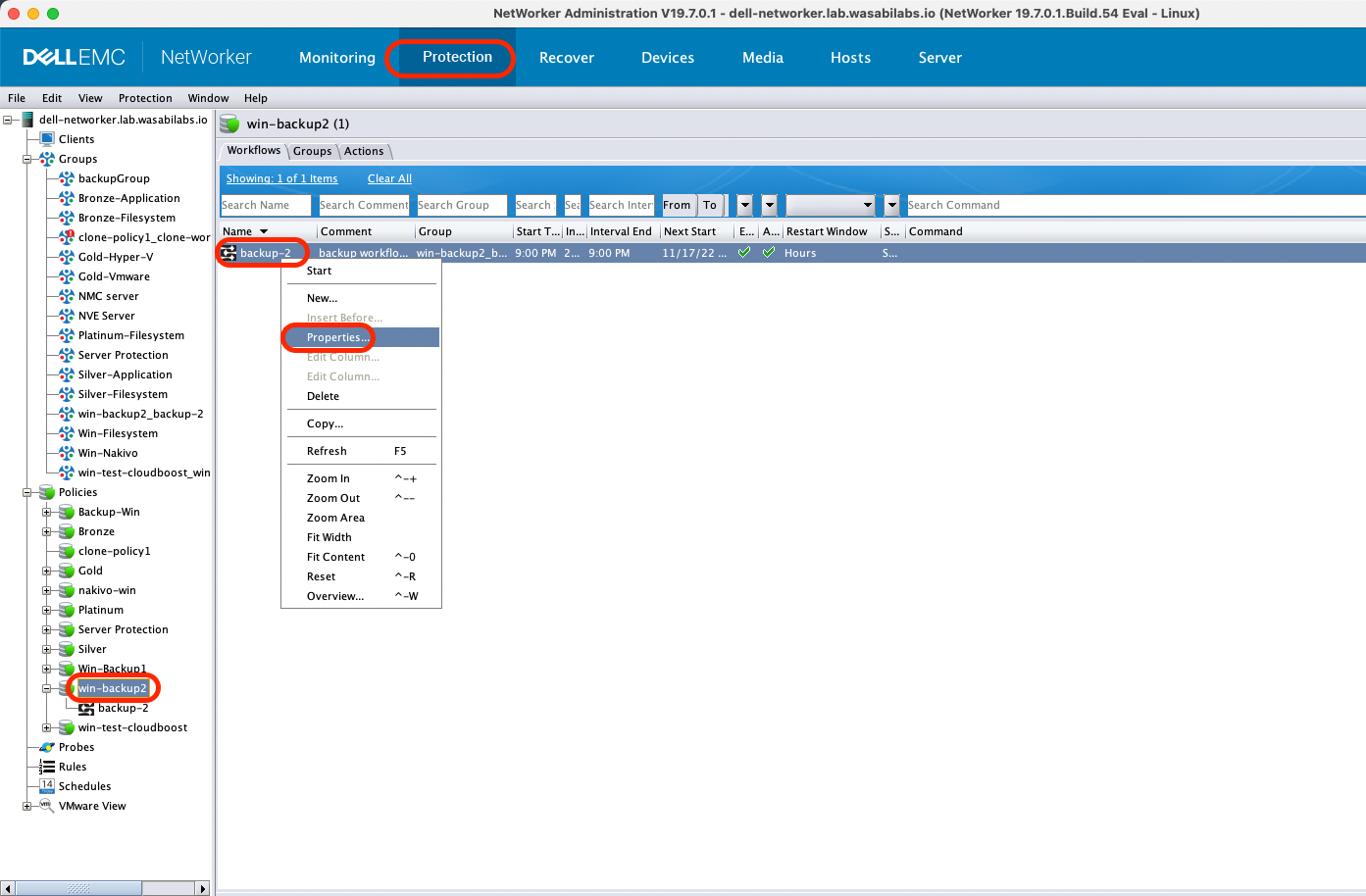
On the Workflow properties window, click Add to add another Action.
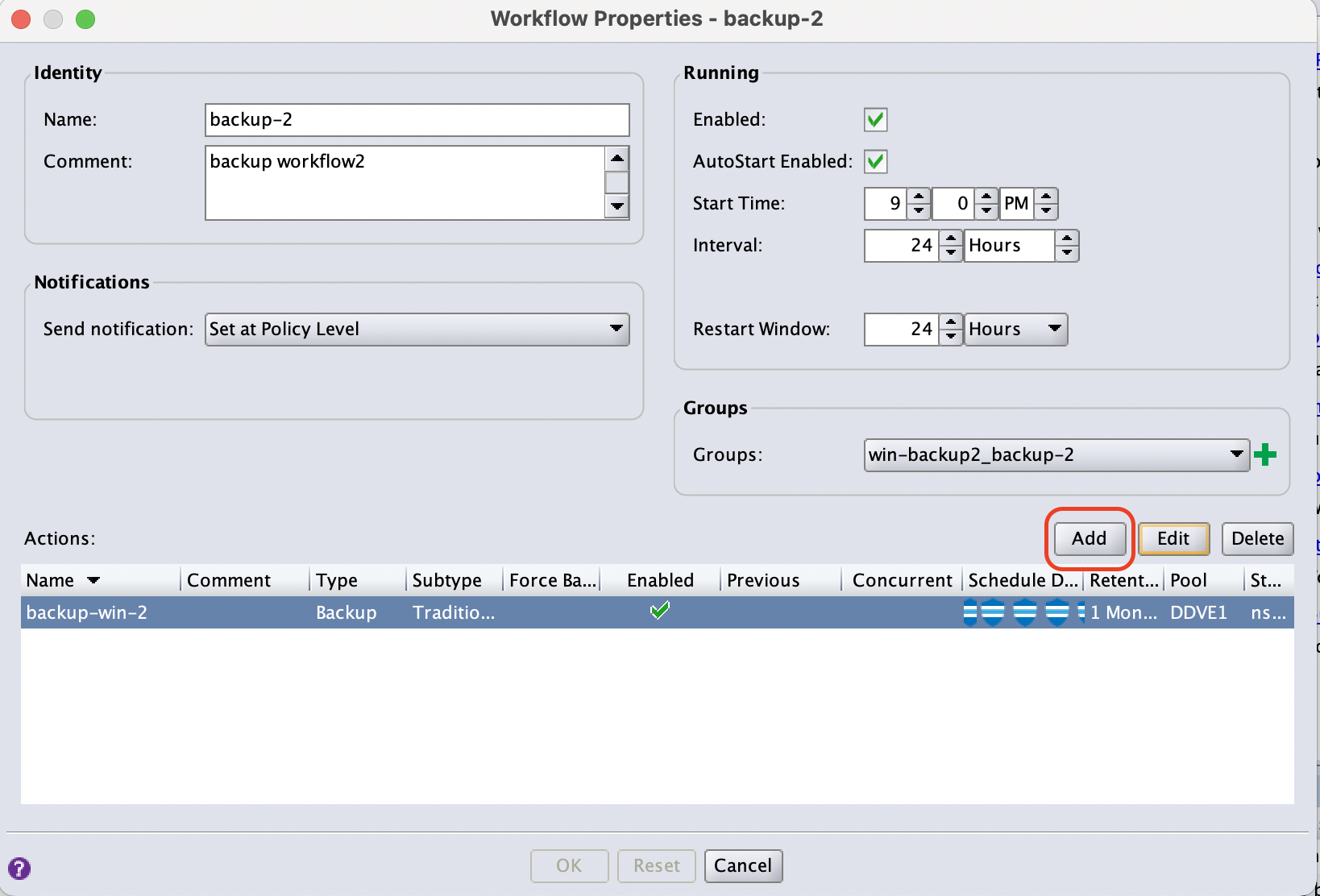
Enter a name for the action and select Action Type to Clone. Click Next to continue.
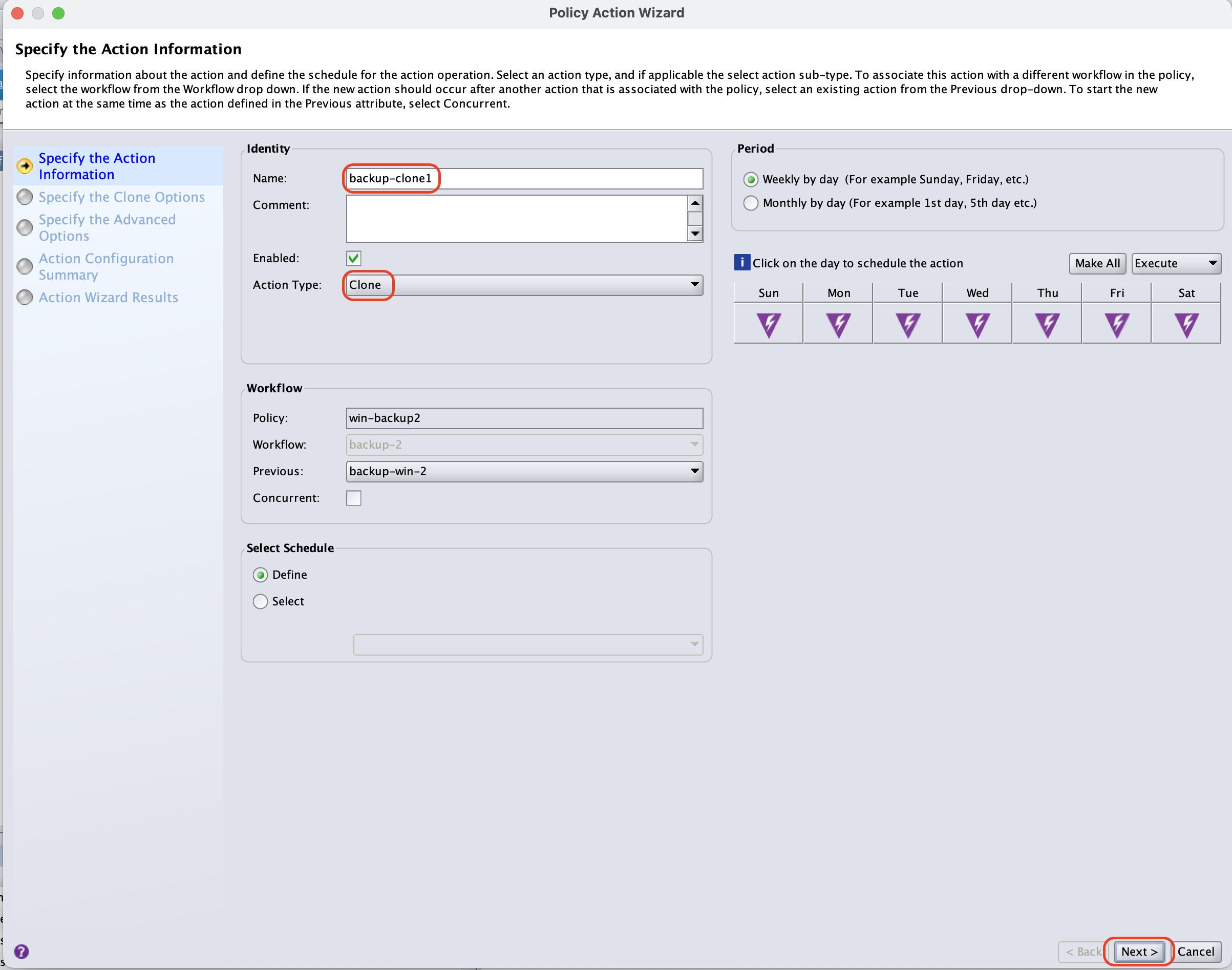
In the Clone options window, select the DD Cloud Tier (created in Section 4) as the Destination pool. Optionally, modify the Retention period and click Next.
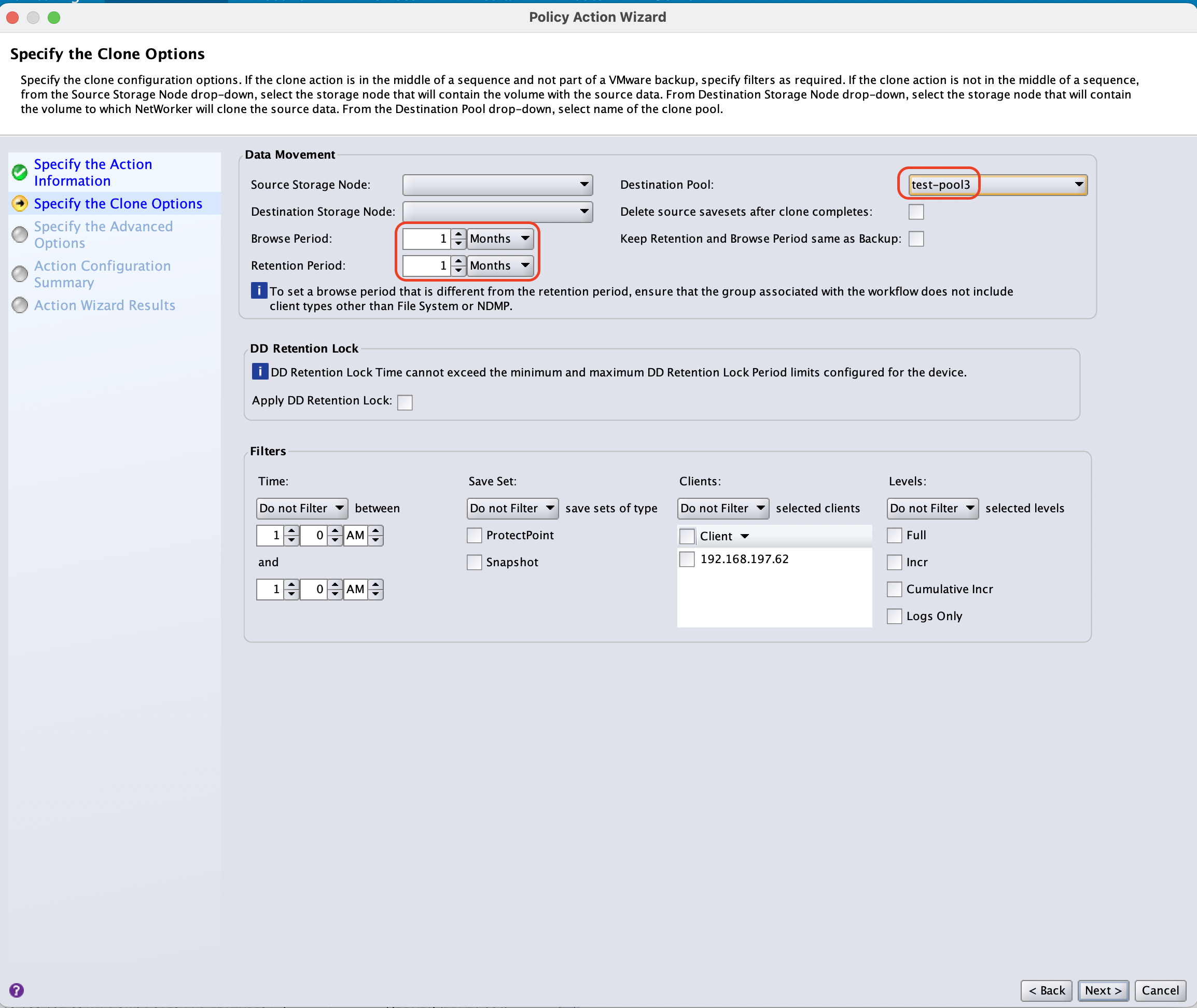
Optionally, modify the advanced options and click Next.
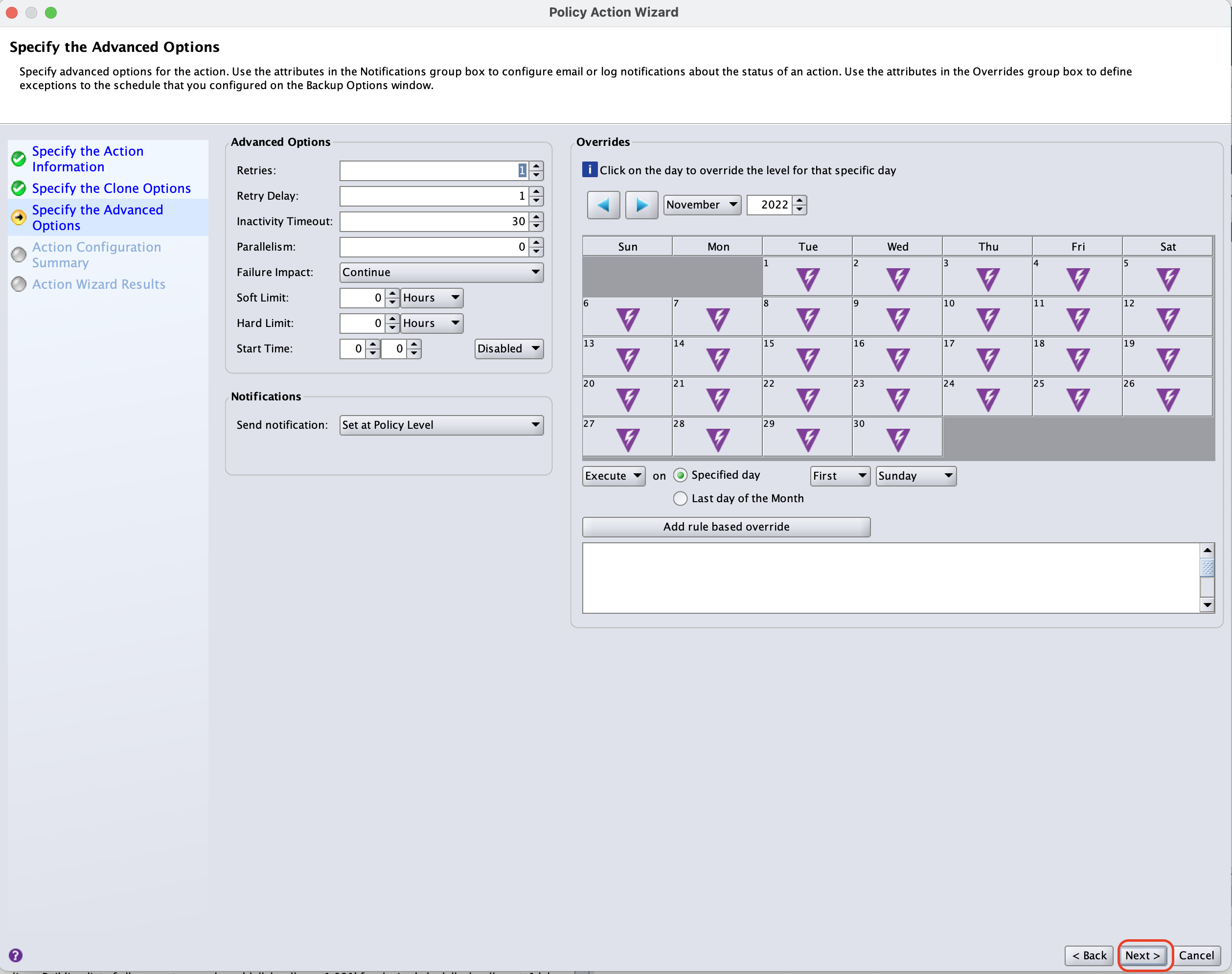
Review the configuration summary. Click Configure to create the Action for the workflow.

On the Workflow Properties window, click Ok.

Running Backups to Store on Wasabi Using DD Cloud Tier
Once you have created the policy and workflow for creating backups and clones, backups will be running as per the schedule in the protection policy. Manual backups can be initiated from the Monitoring tab in Networker. Follow the steps below to initiate manual backups and see the logs.
On the Networker GUI, click the Monitoring tab. Click the + sign beside the policy name to expand the policy in which to run. Right-click on the workflow that you want to initiate and click Start. This will run the protection workflow.
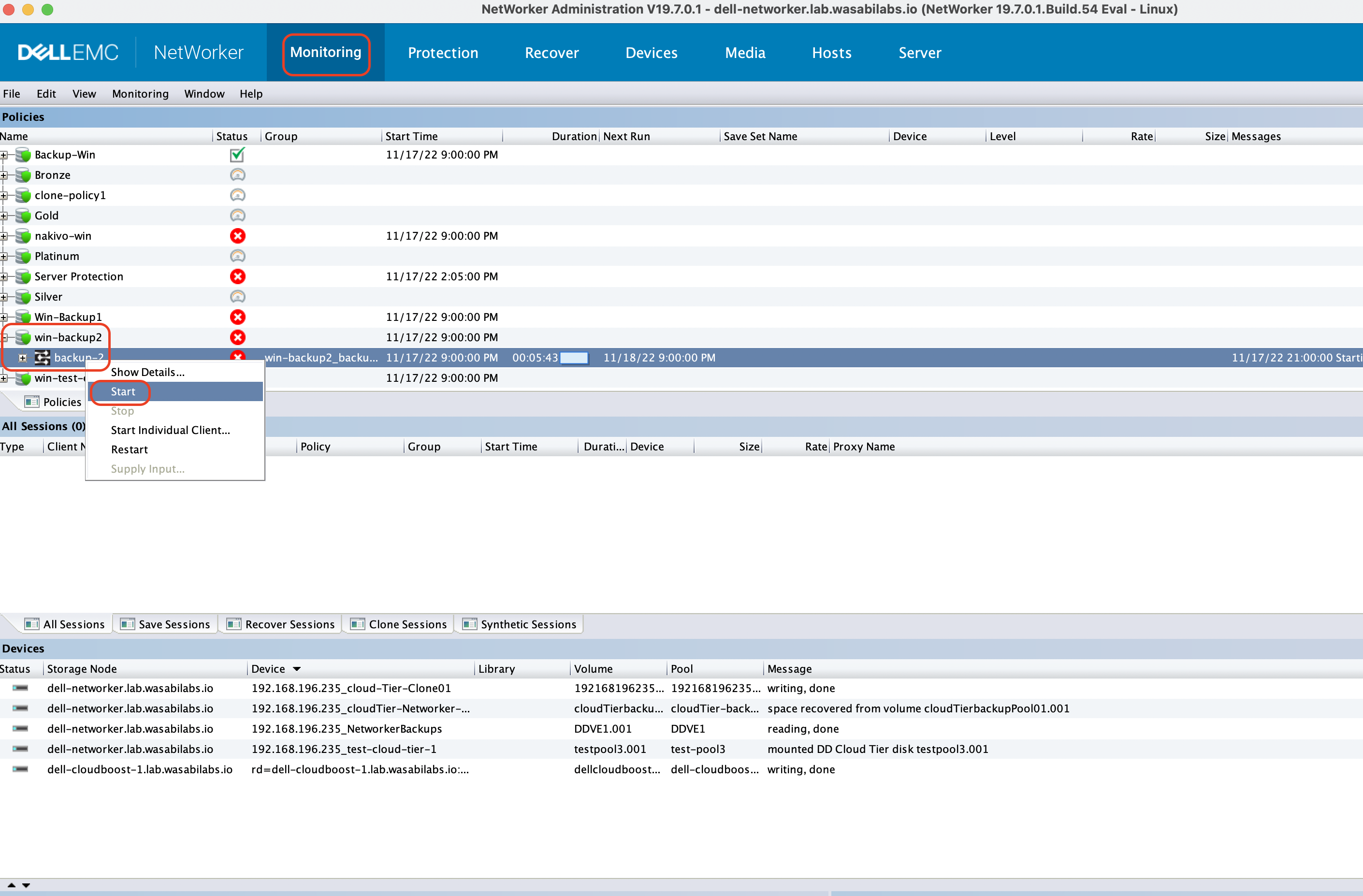
Once the backup workflow has started, you can view the details by expanding the actions and clicking on each action. To view log messages, hover over the Messages column on the right for each of the actions.
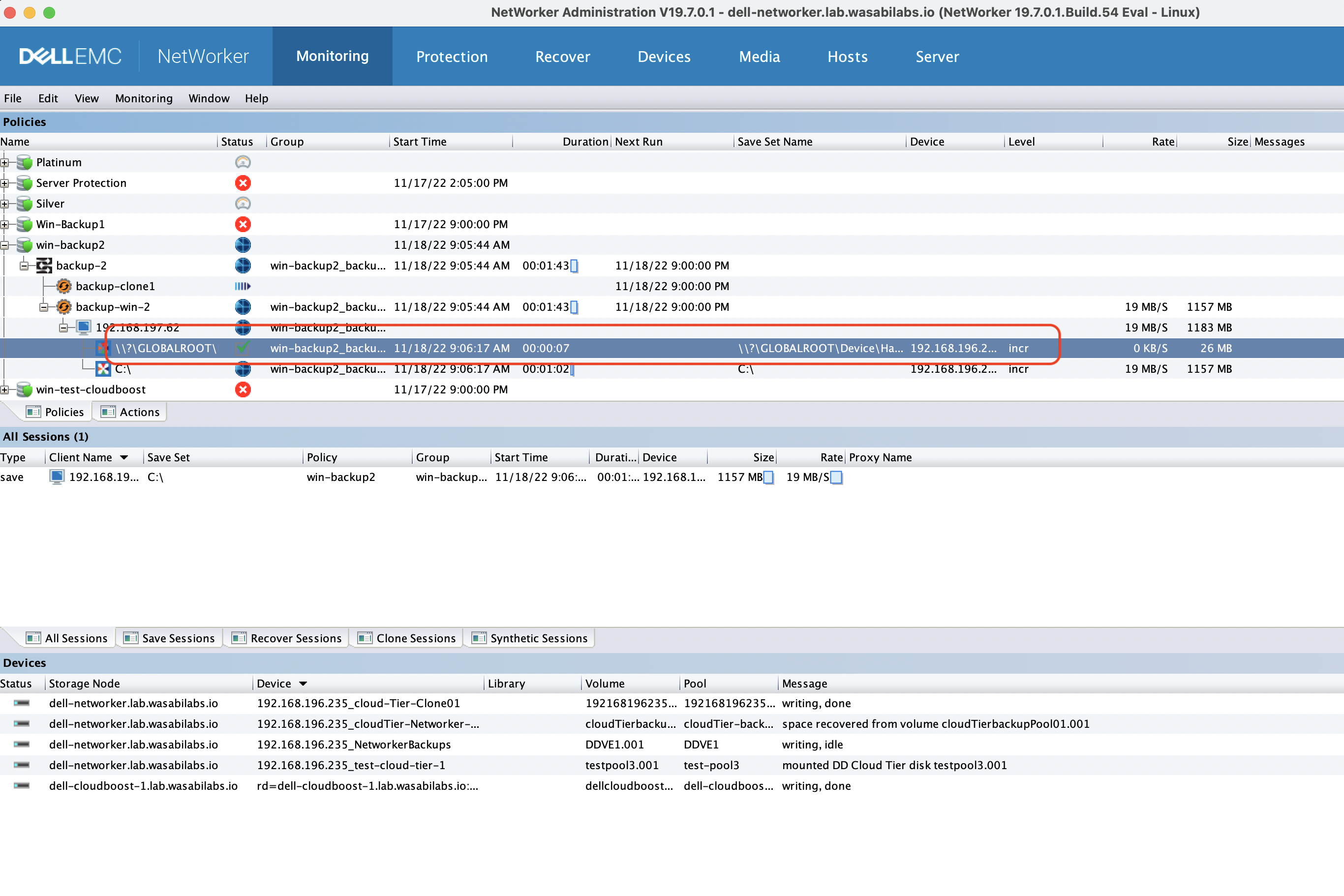
Recovering From Backups
Click the Recover tab. Click New Recover in the menu bar under Recover.

Select Recover Type and click Next.
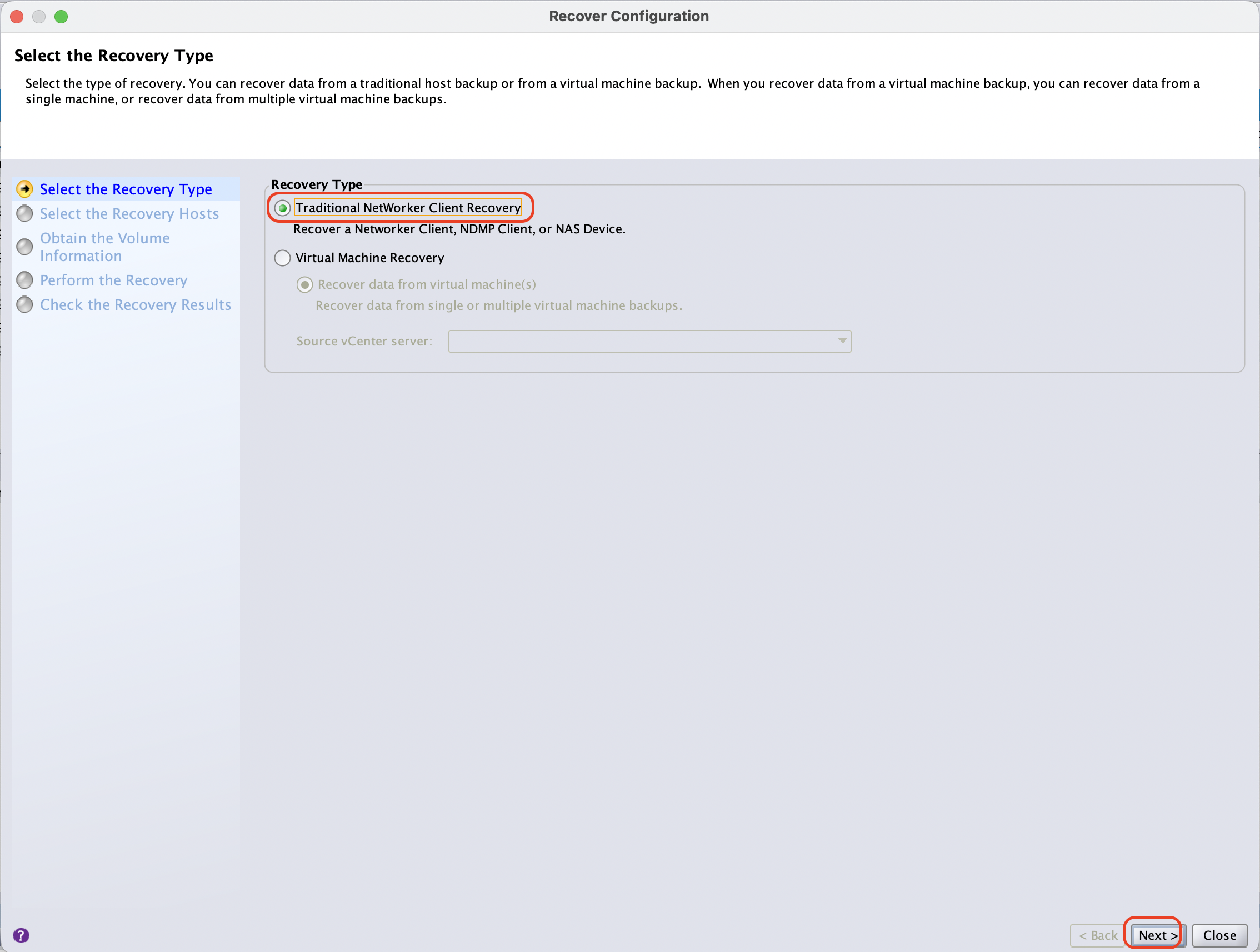
Select the name of the host that needs to be recovered. Click Next.

Select the backup set to be recovered. There are three ways to select a backup set:
Browse tab - On this tab, click Backup Overview to get a calendar view per week or month. Select a day to list backups performed on that day. Select a backup set from the list and click Change Browse Time to go back to the Data to Recover window.
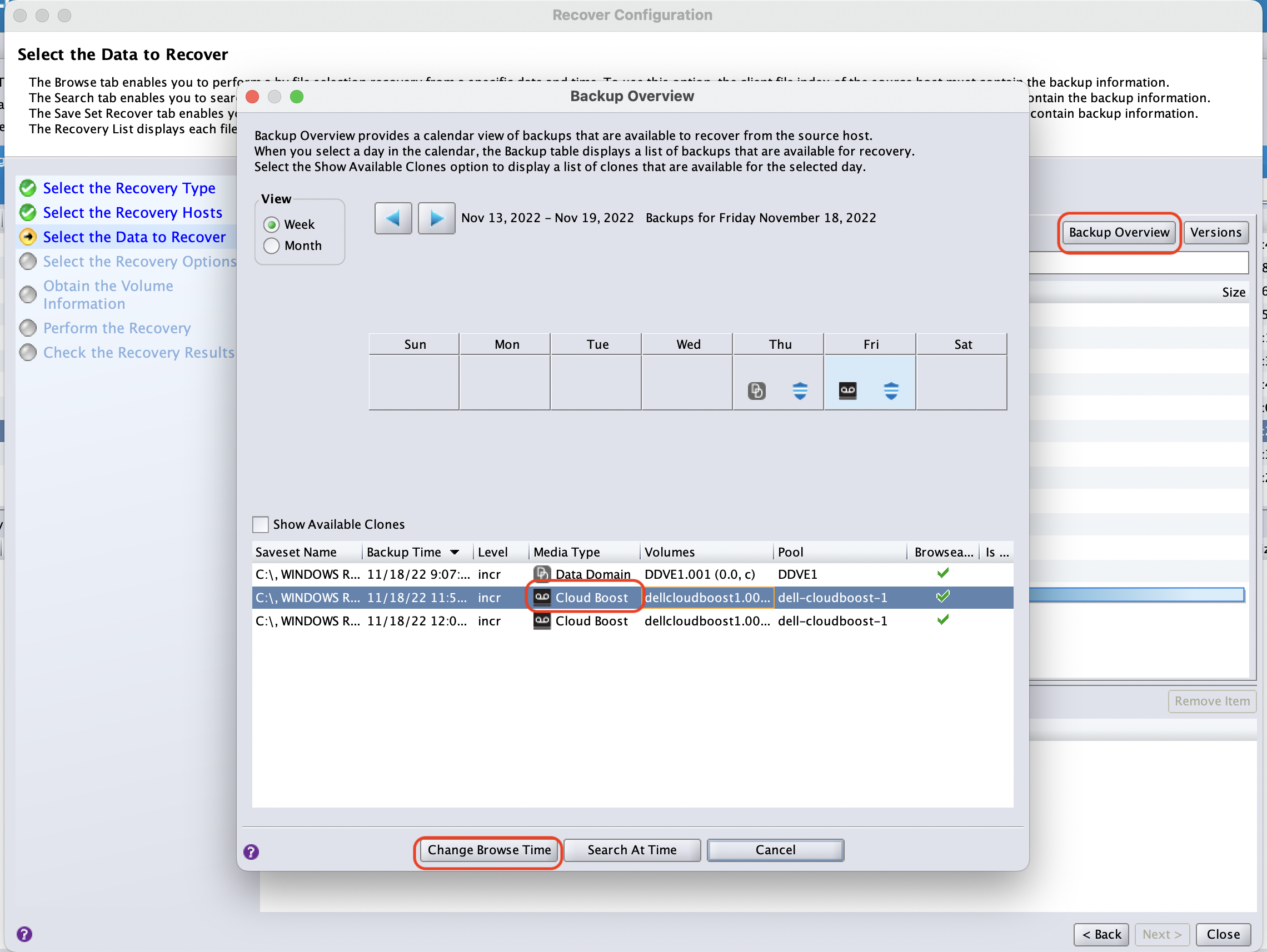
Search tab - You can search and select the backup sets based on file or directory name, file path, or by the time of backup.
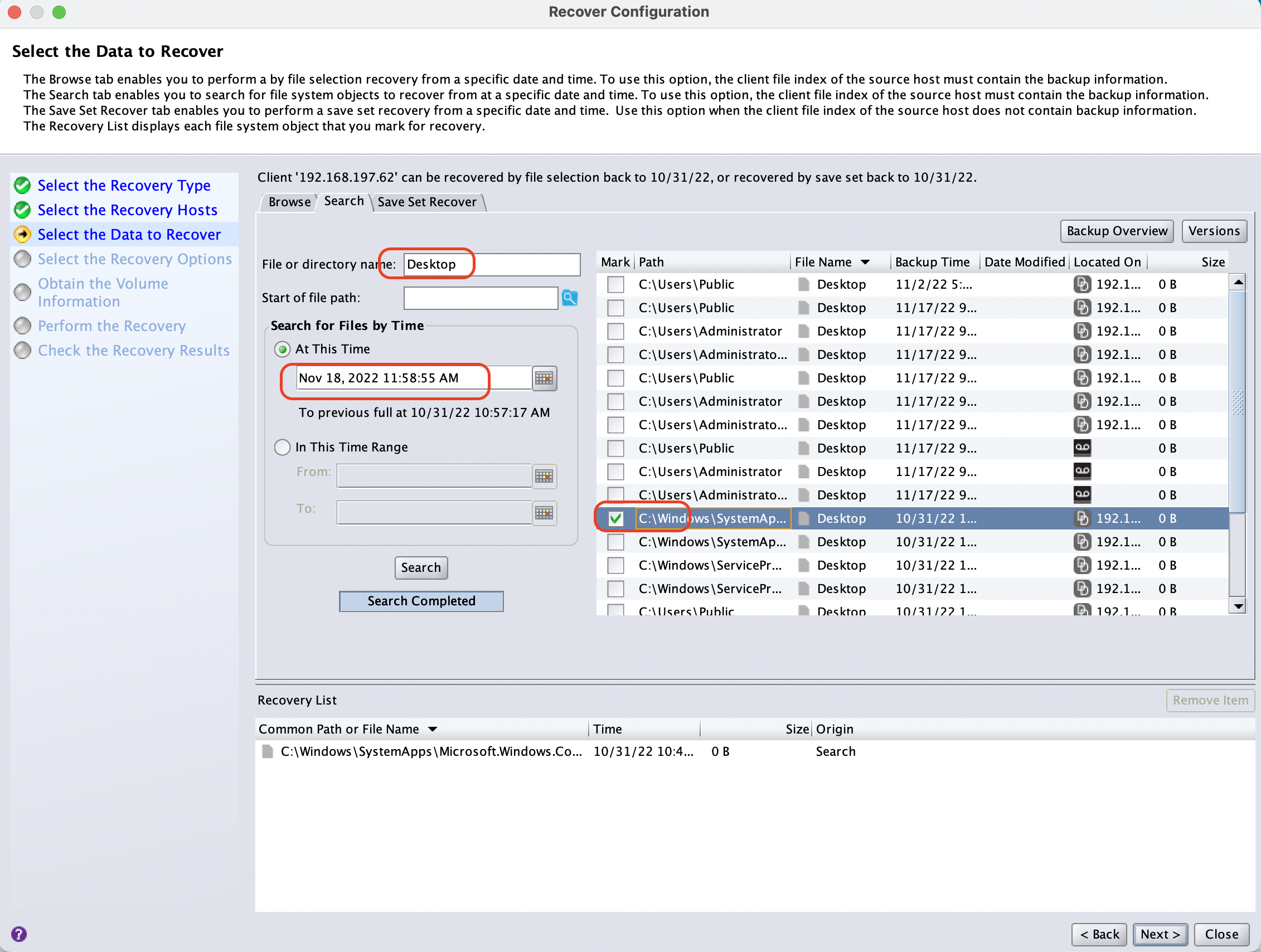
Save Set Recover - Query the list of backup sets based on the time of backup and select the backup in which to recover. Click Next.
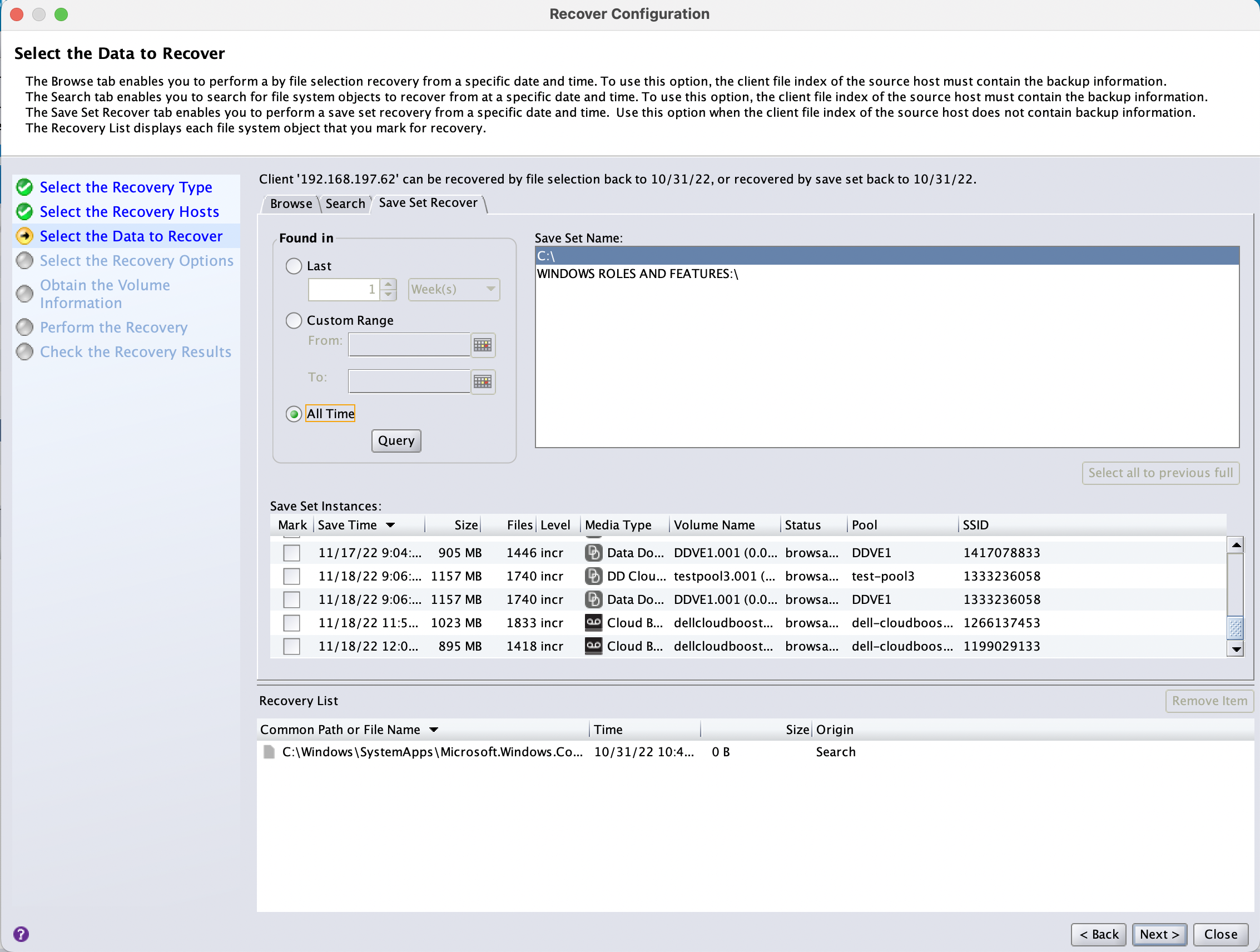
Select a path in the recovery options window. If "New destination path" is selected, click the folder icon on the right to select a path.

Leave the recommended option in the Volume information window. Click Next to continue.
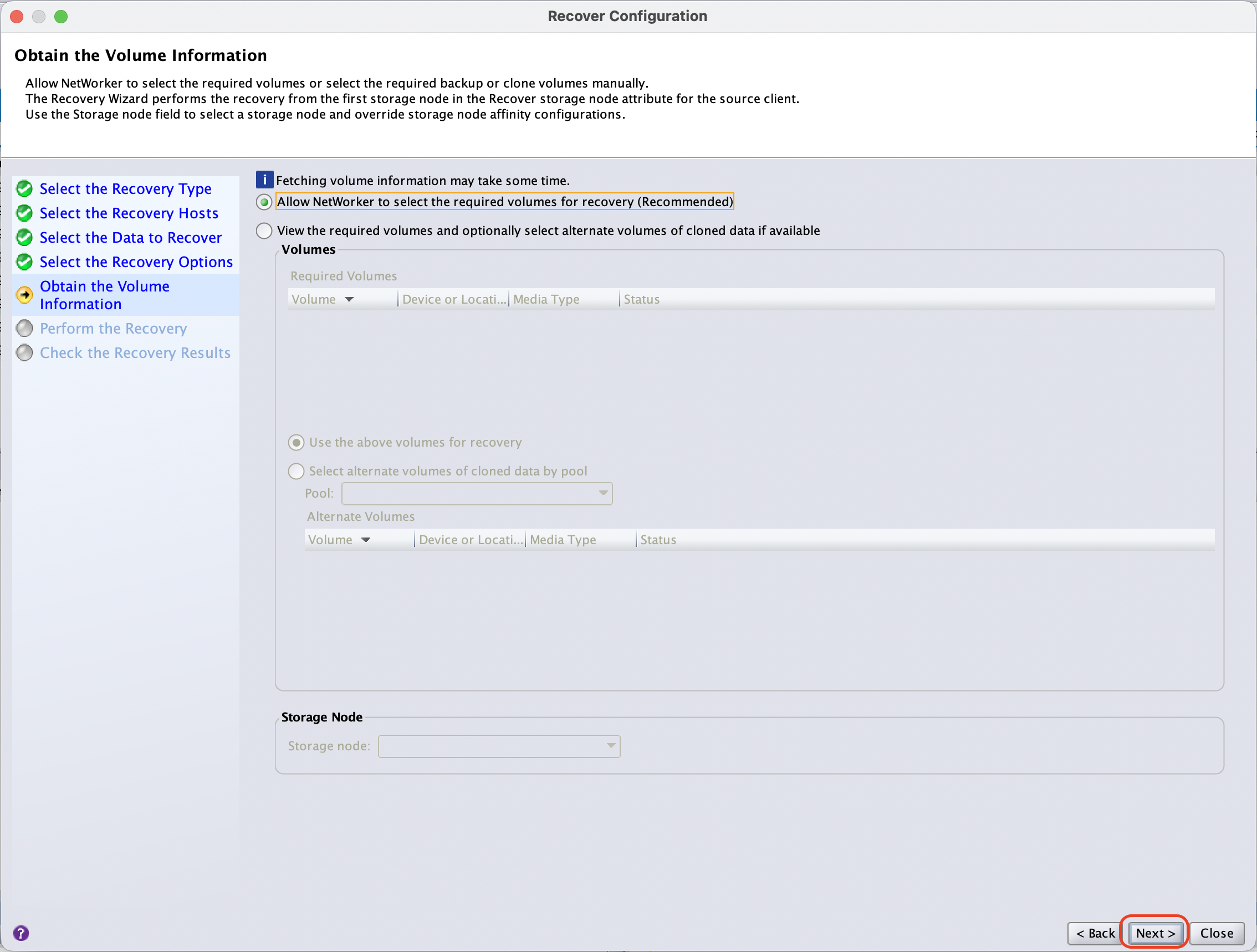
Enter the name for the recovery and select the Recovery Start time, as needed. Click Run Recovery to start the recovery.

In the Recovery results window, the progress of the recovery and log can be viewed. Click Finish to exit.

Storage On Wasabi
The Data Domain Cloud Tier feature creates three directories in your Wasabi bucket when the Cloud Unit is added successfully. The directories are named 'dx', 'cx' and 'mx'. The dx directory is used for data segments, the directory named 'cx' is used for configuration data, and the directory named 'mx' is used for storing metadata.
Prior to DDVE version 7.9, Cloud Tiering creates three buckets, c0, d0, and m0, on the Wasabi account to store configuration, data segments, and metadata respectively.
Currently, there is an issue where the data stored in the Wasabi bucket is not visible on Wasabi Console. You will need to use S3 Browser to view data in the Wasabi bucket
For more detail on Networker and Data Domain Cloud Tier integrations, refer to Dell's documentation.